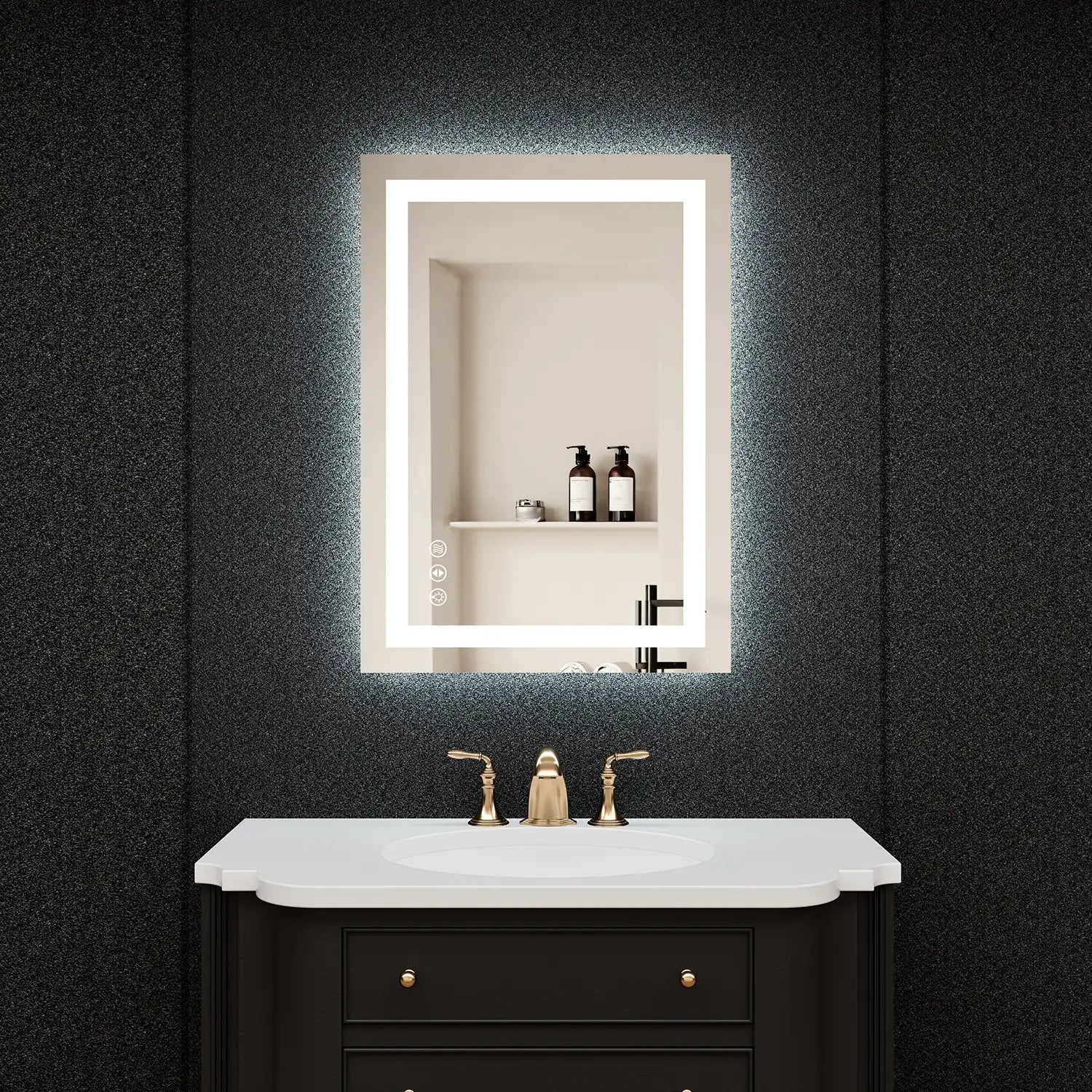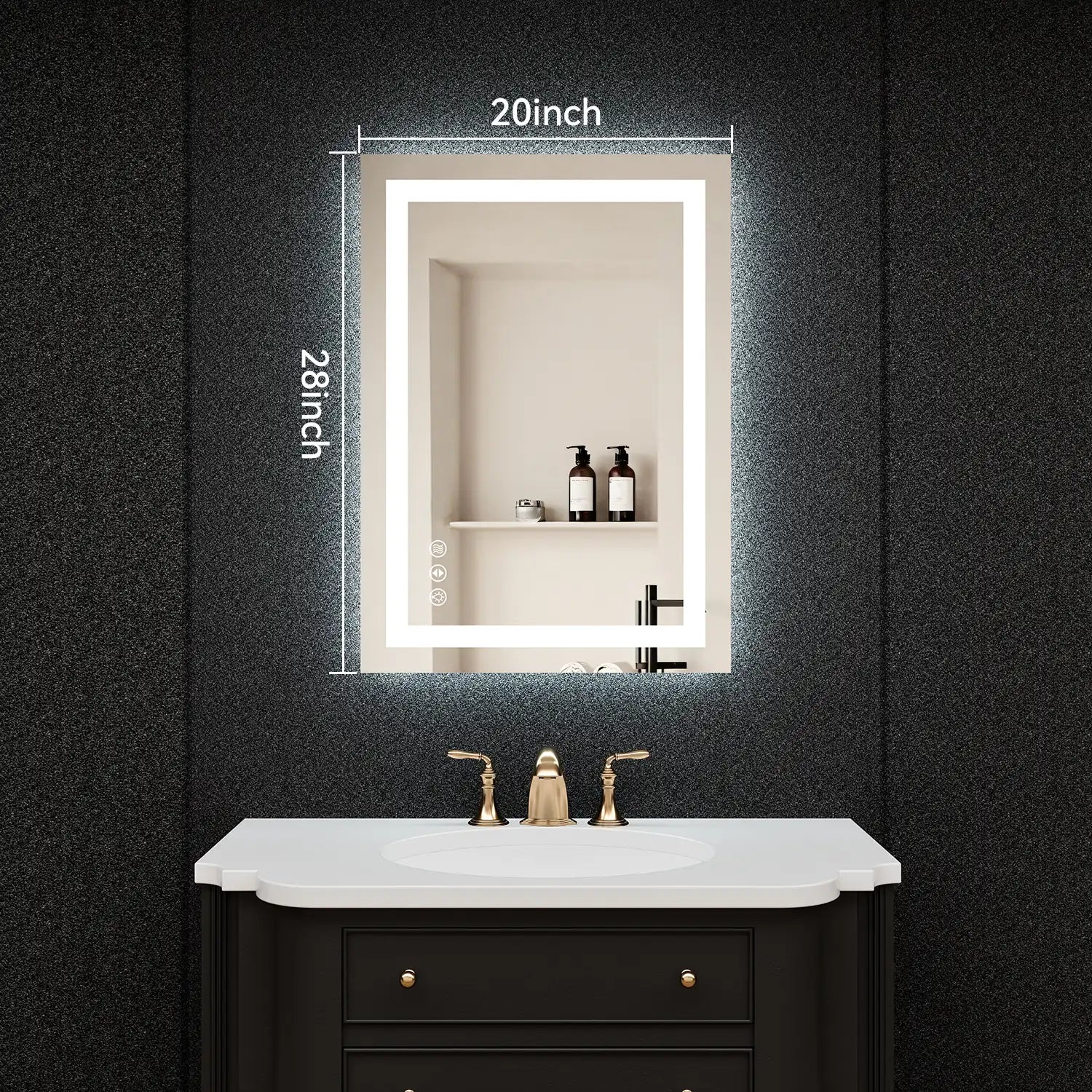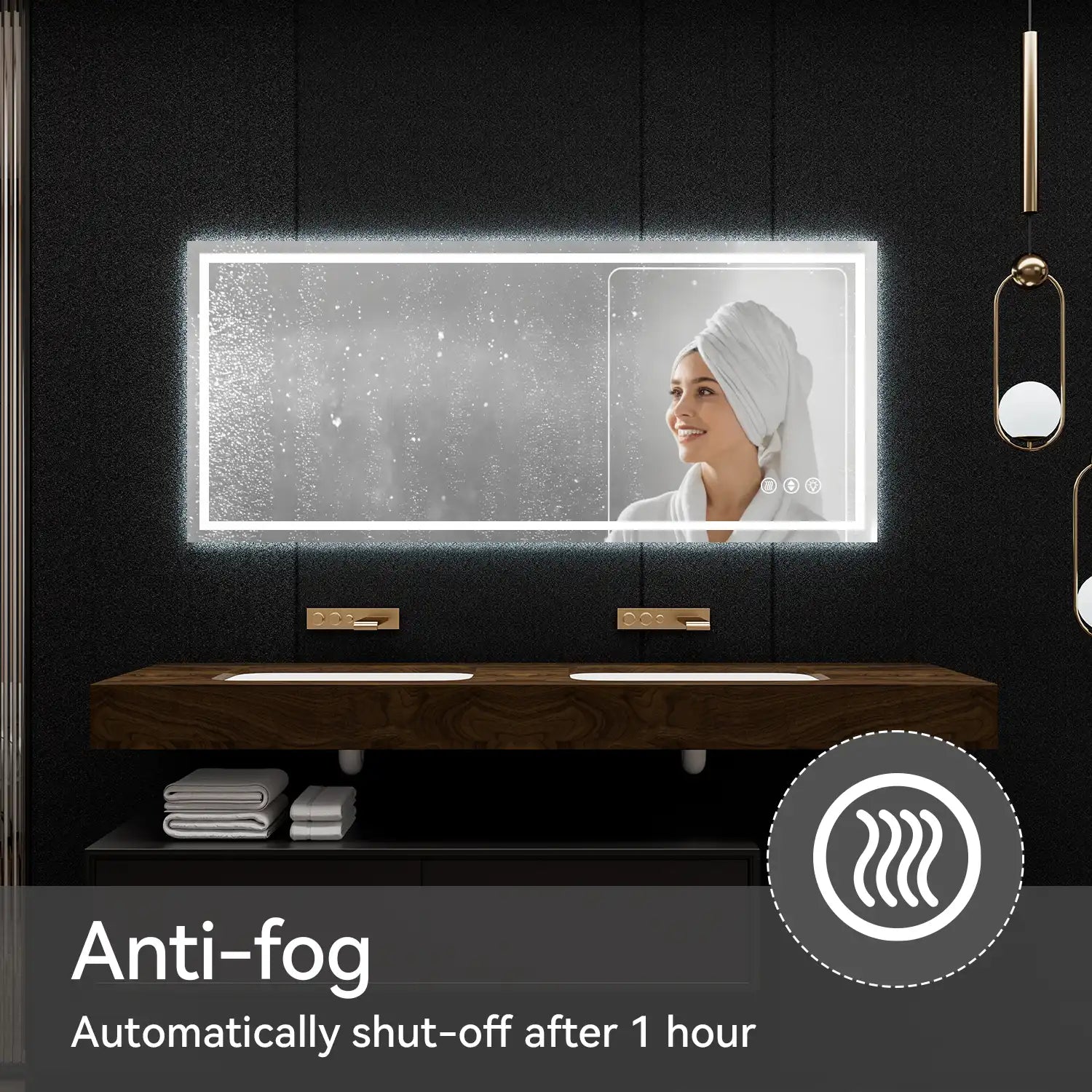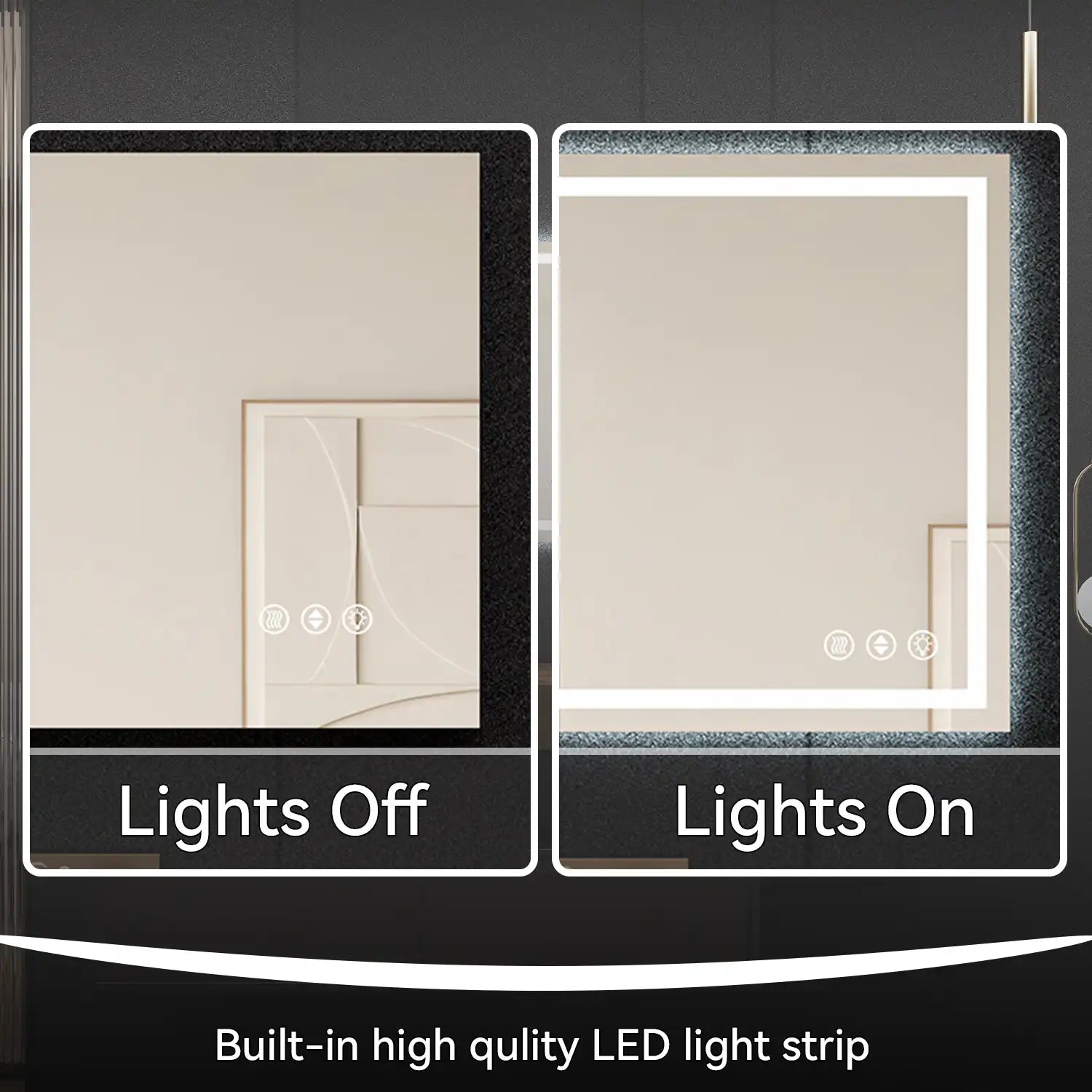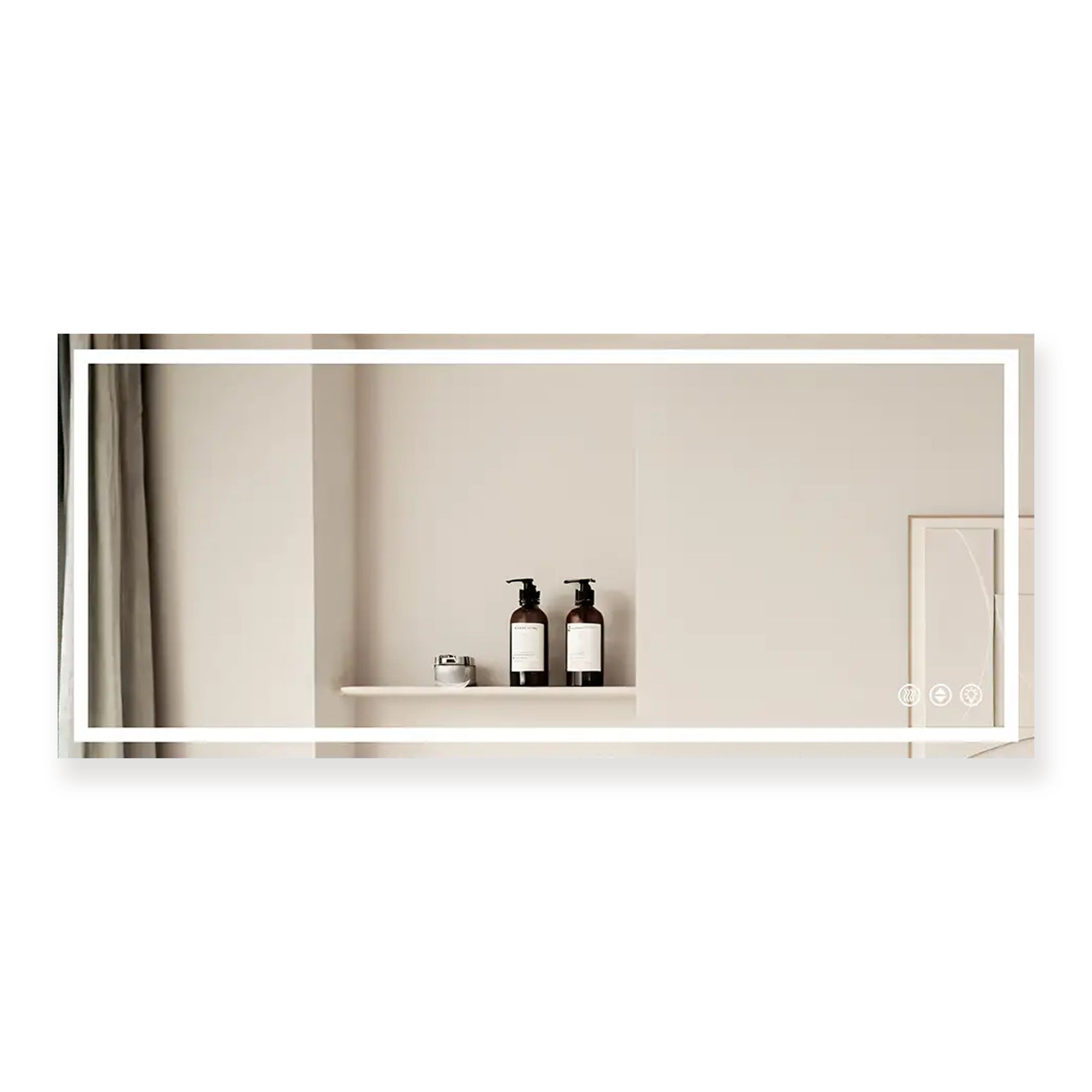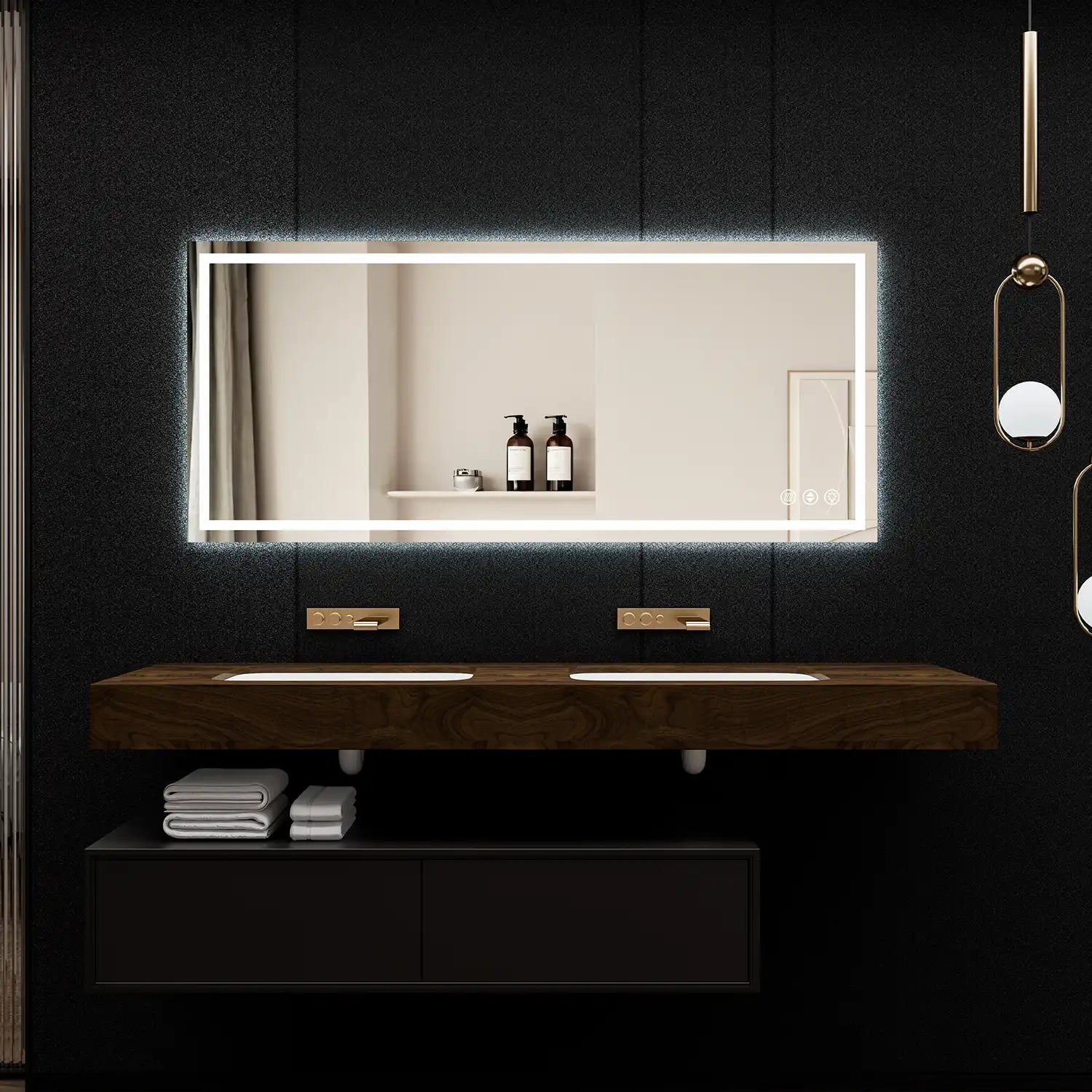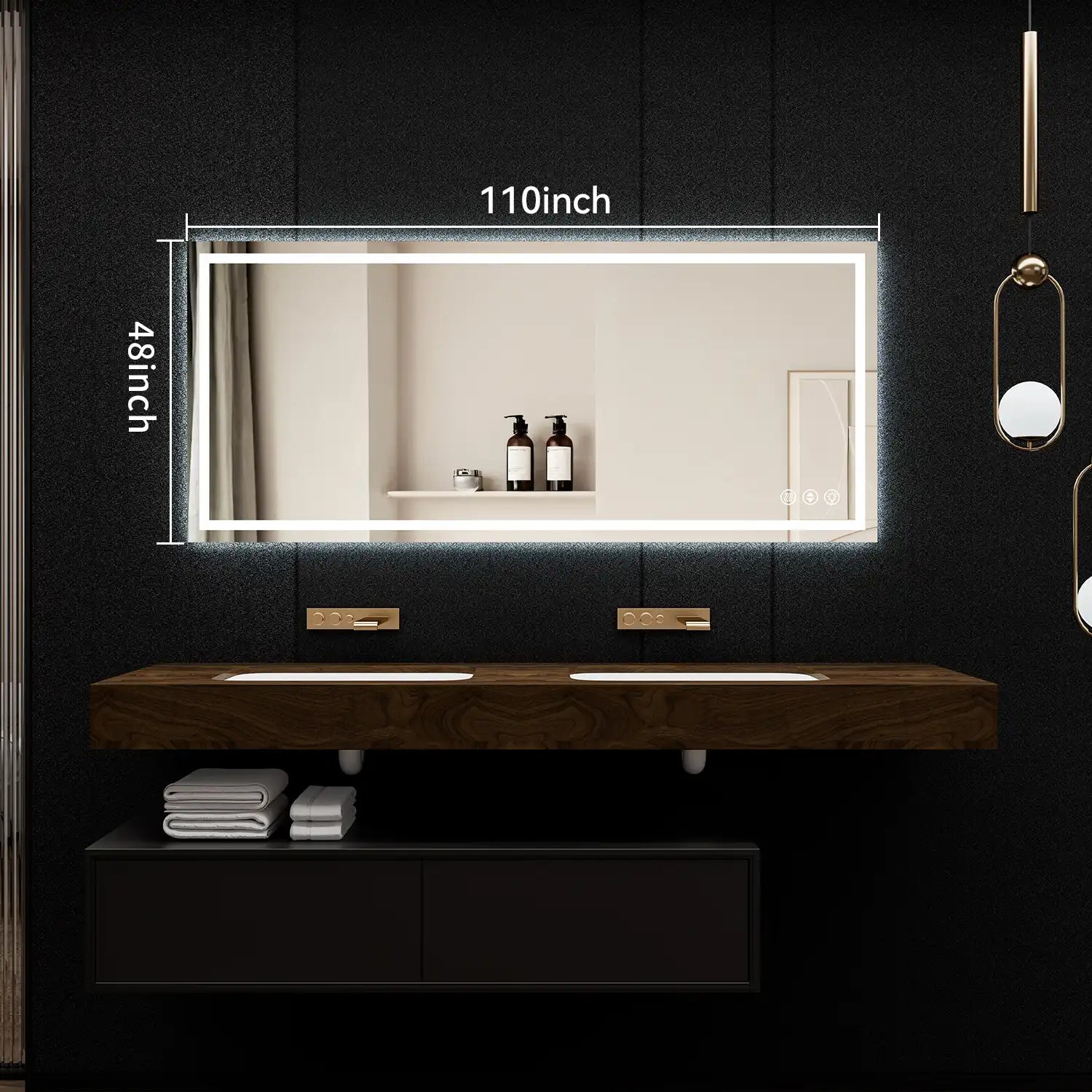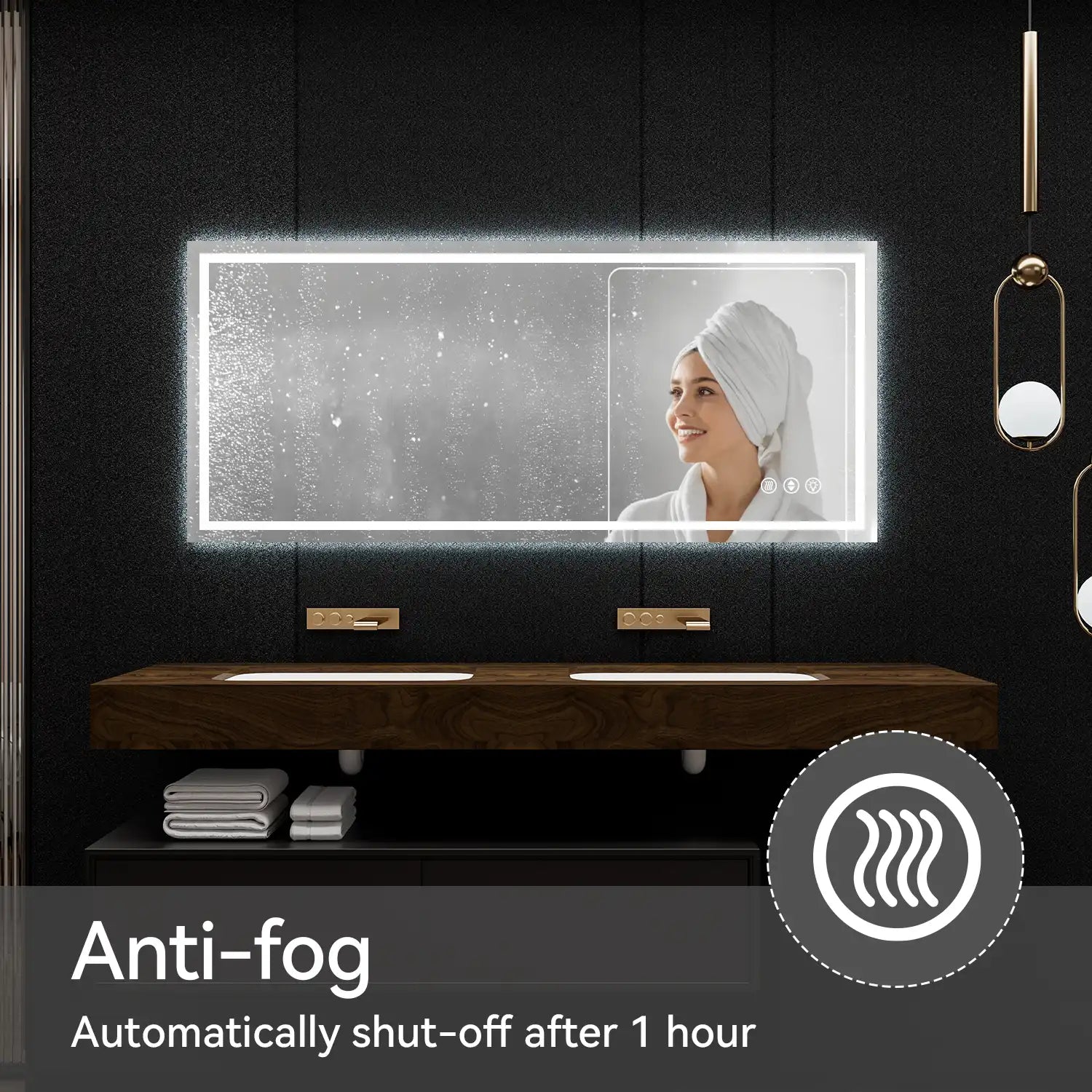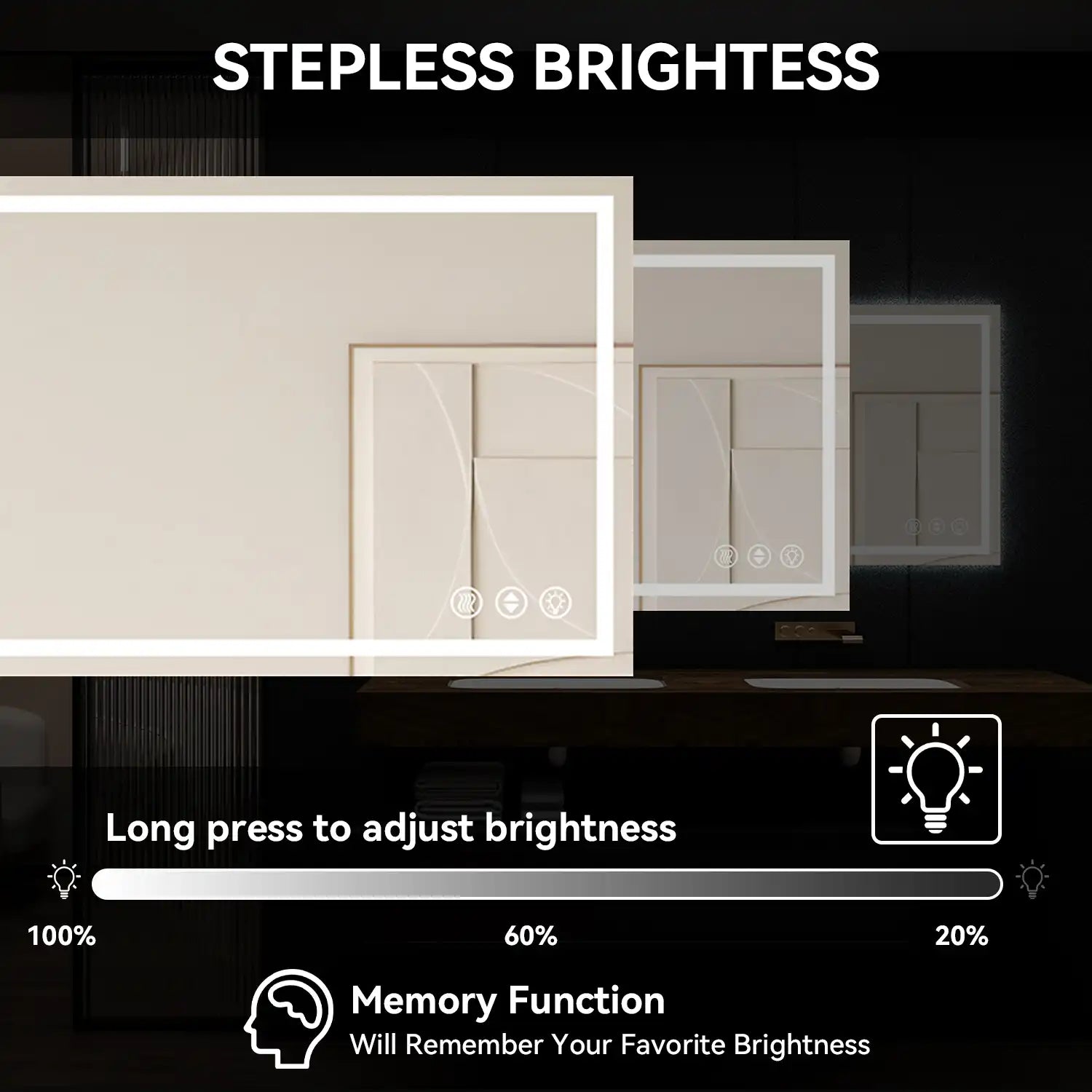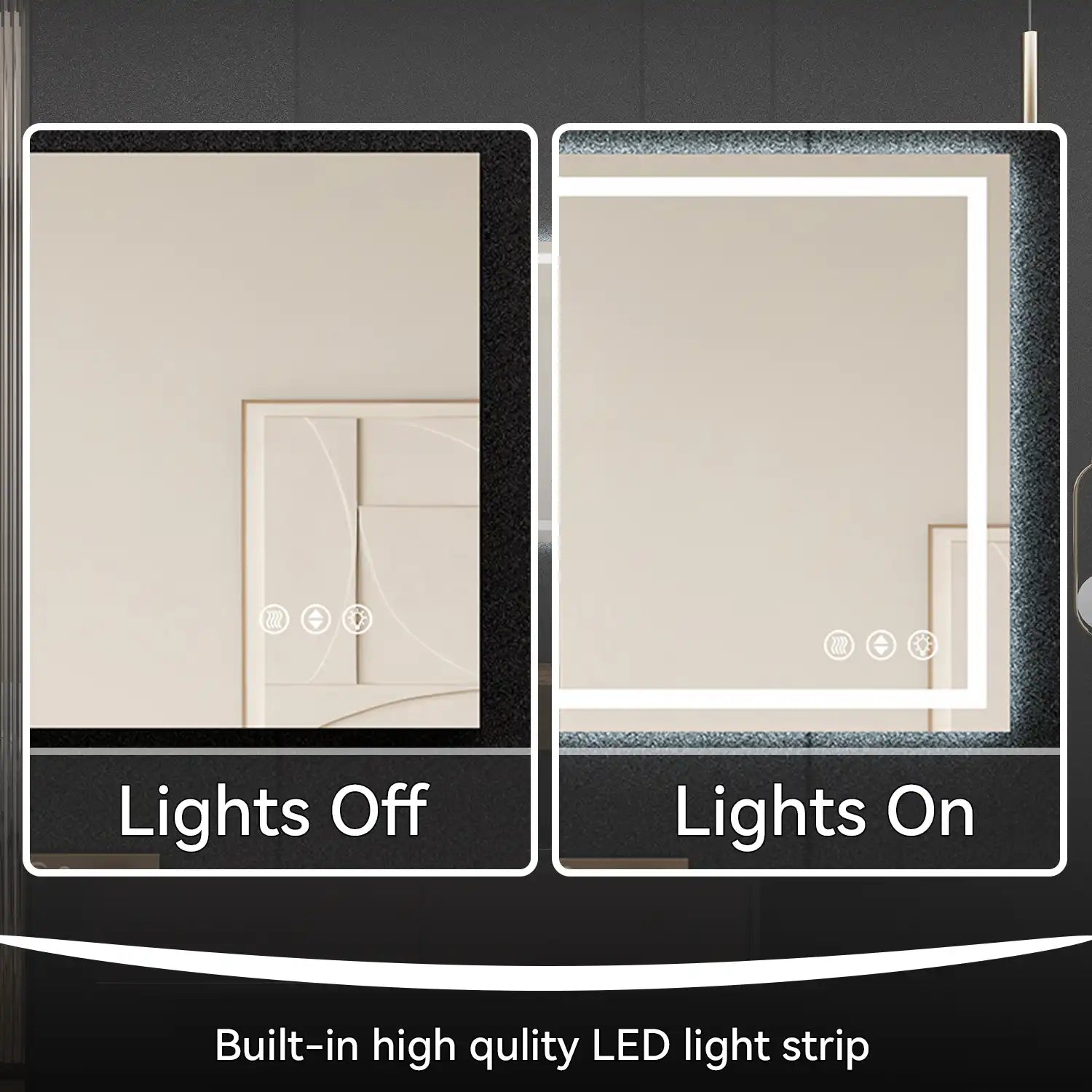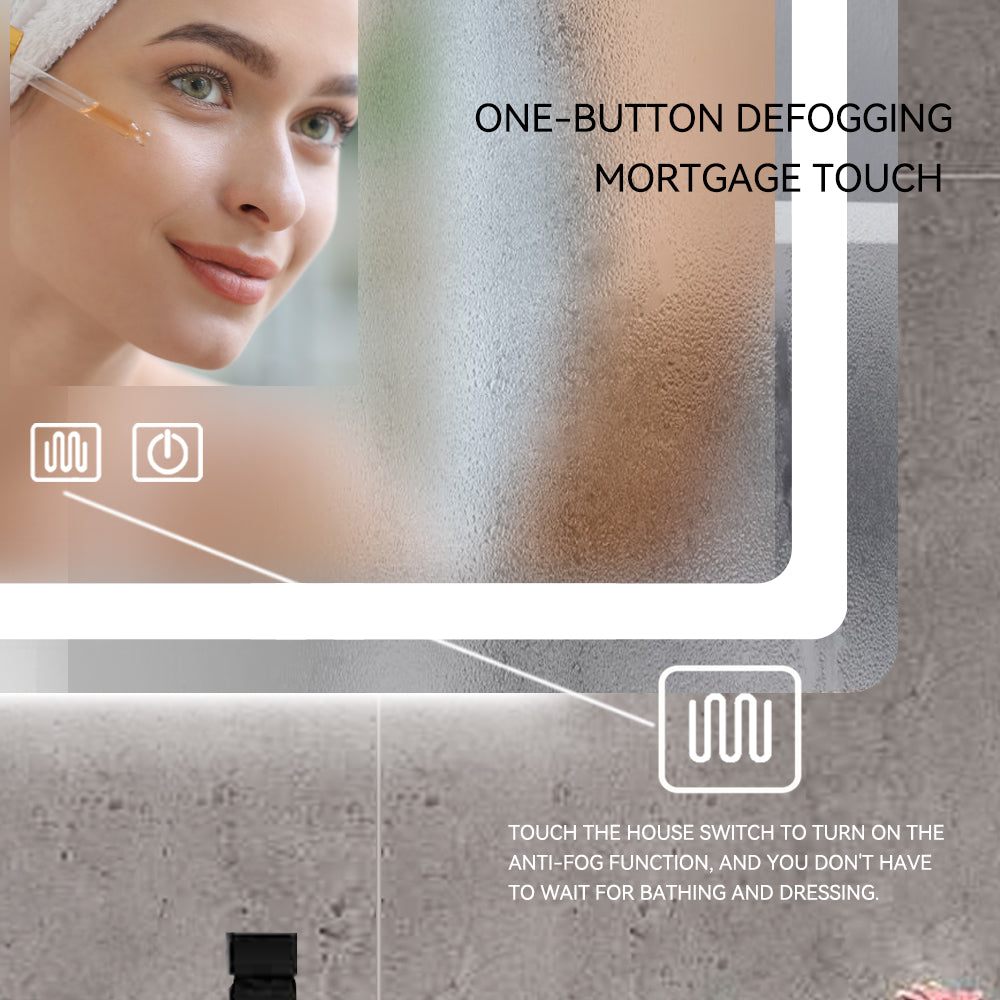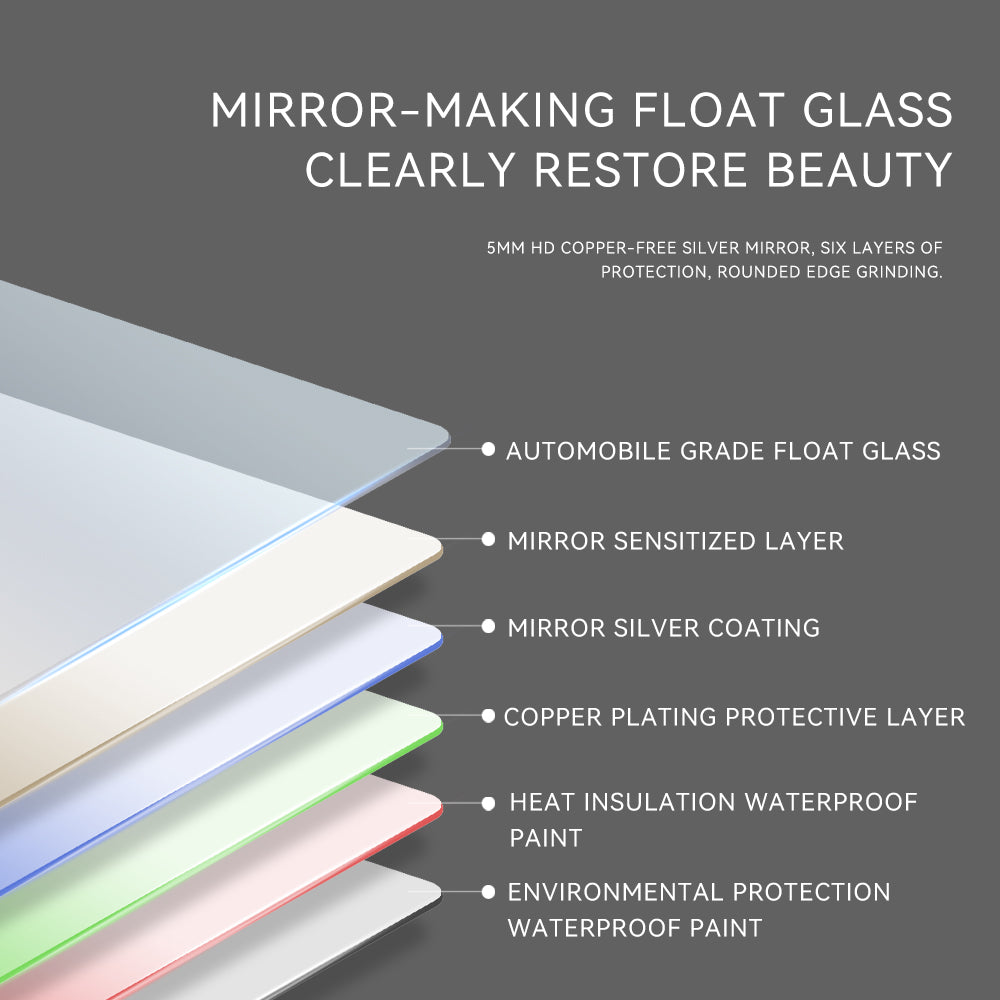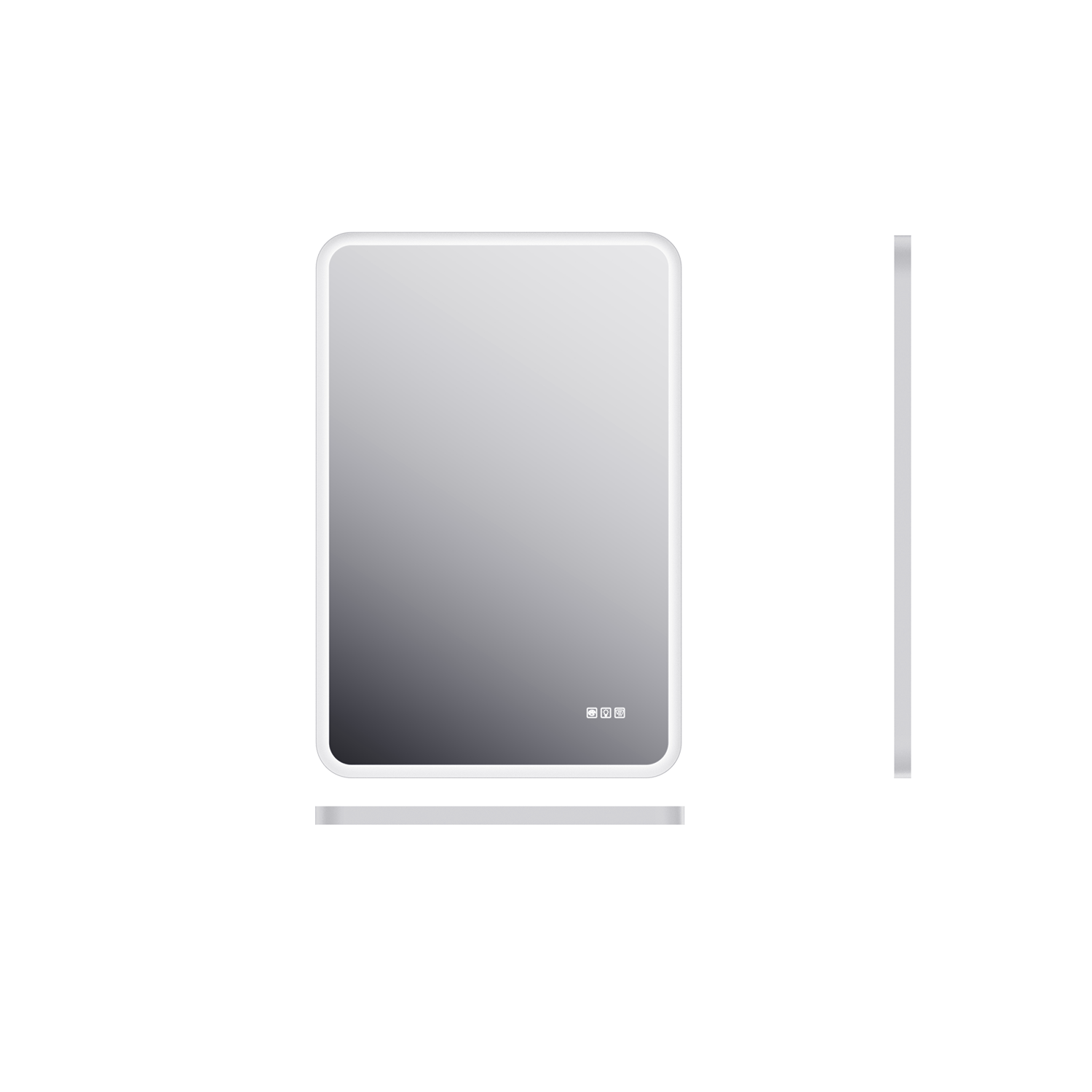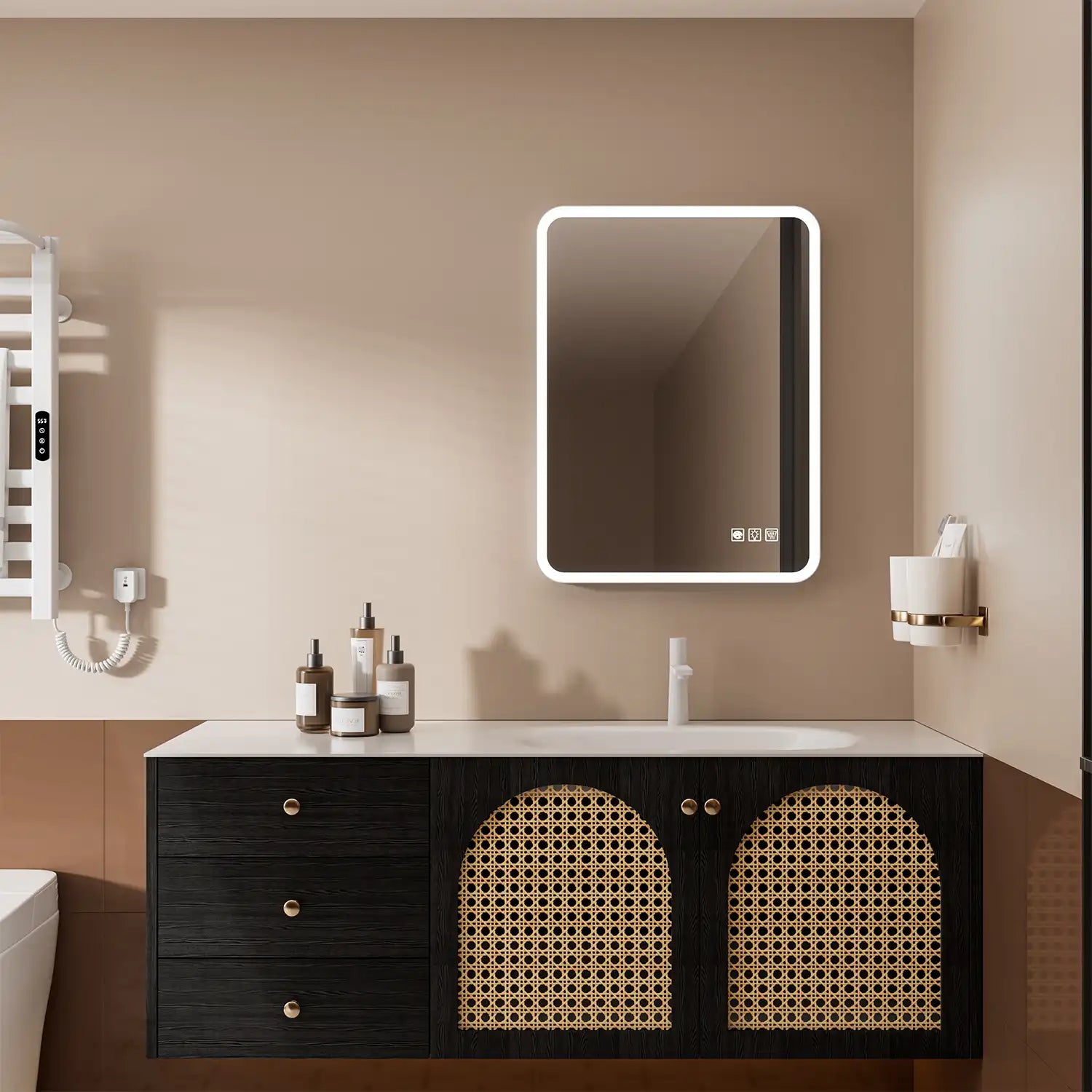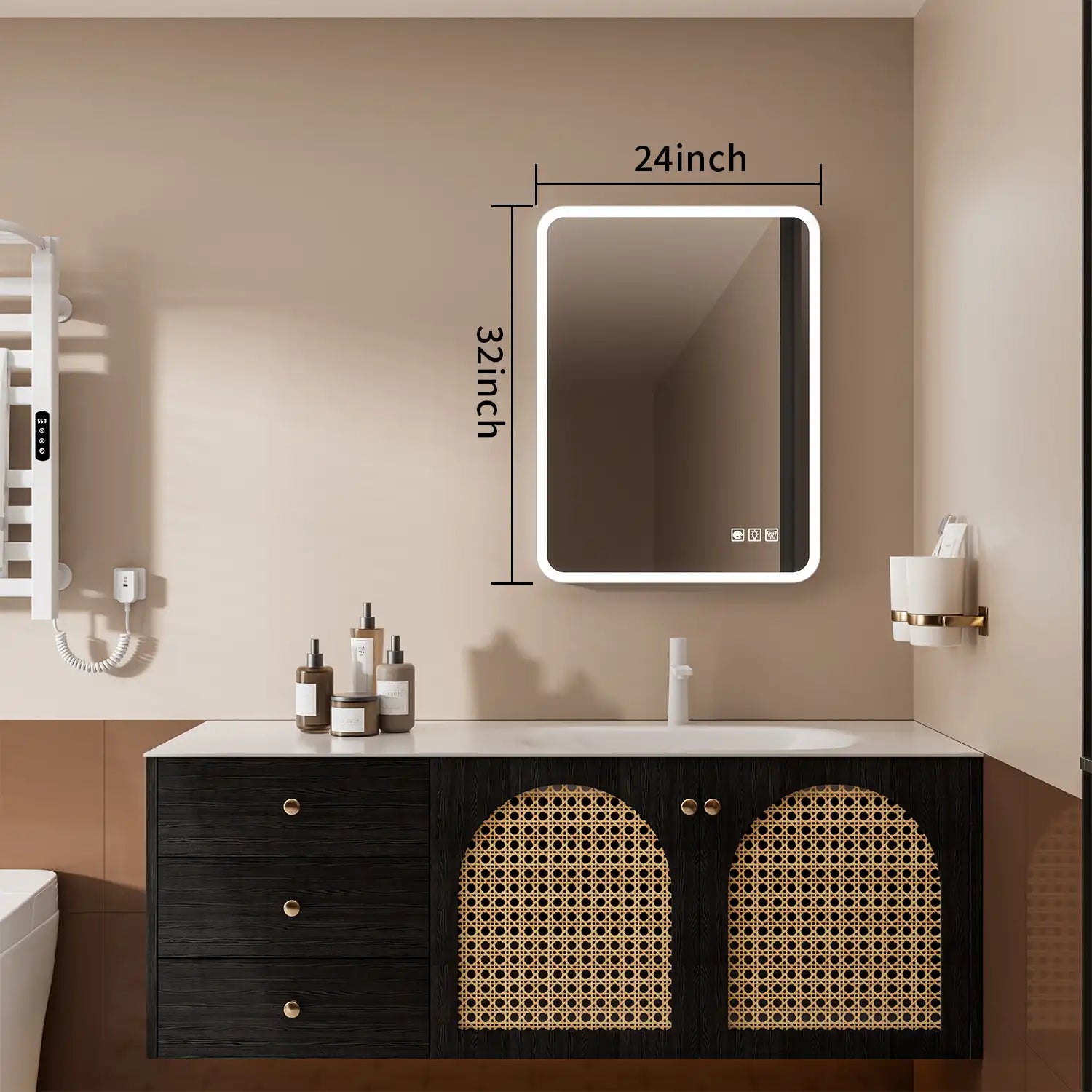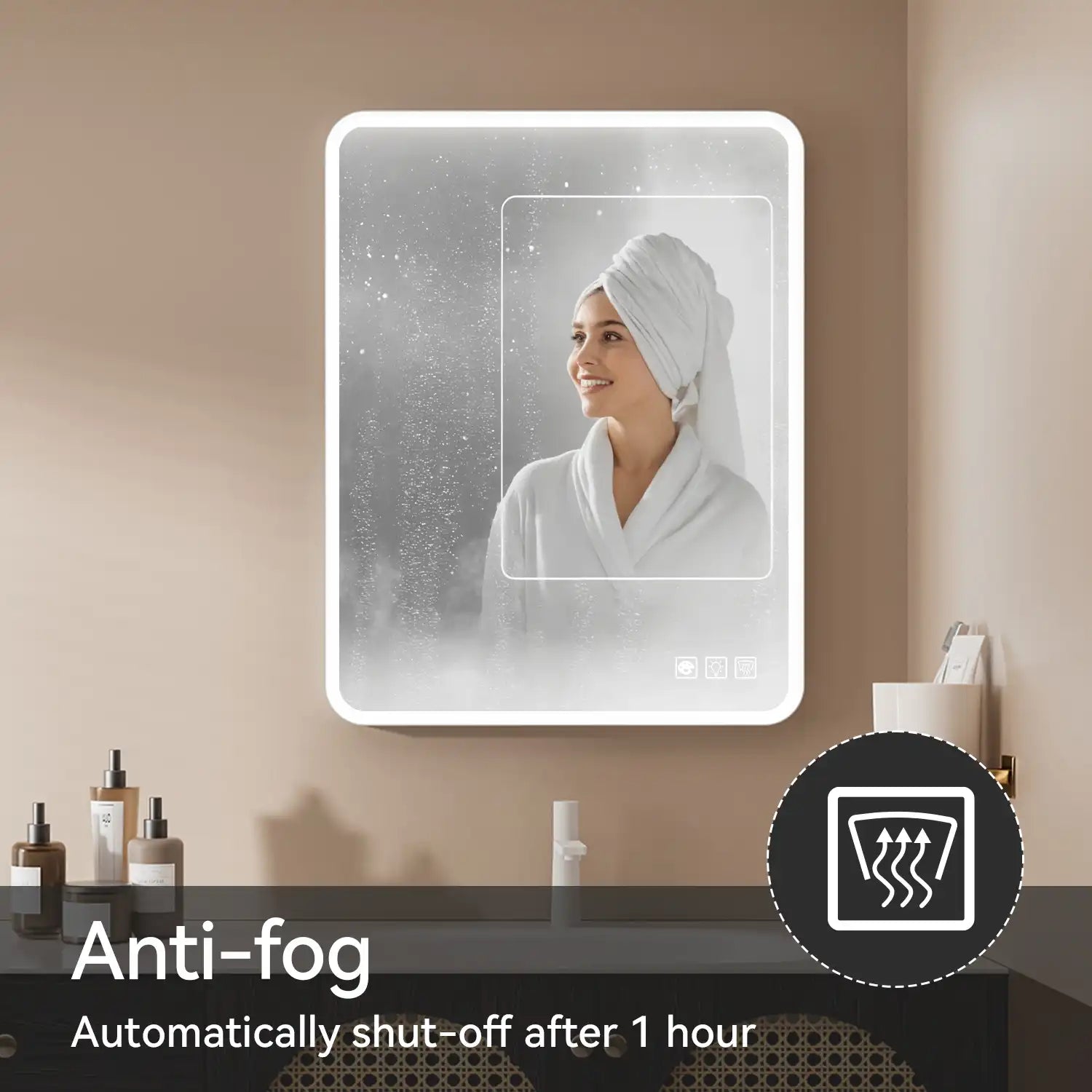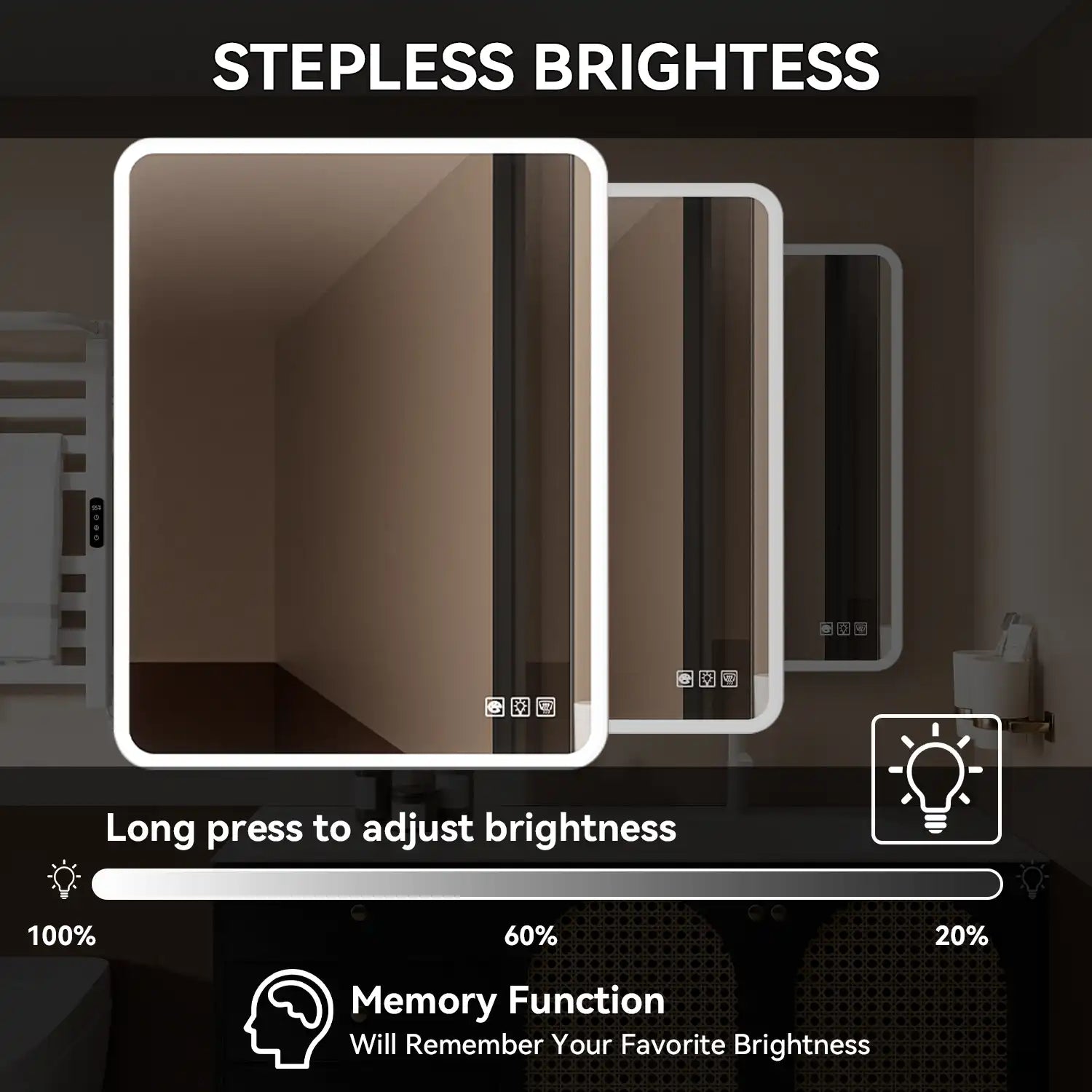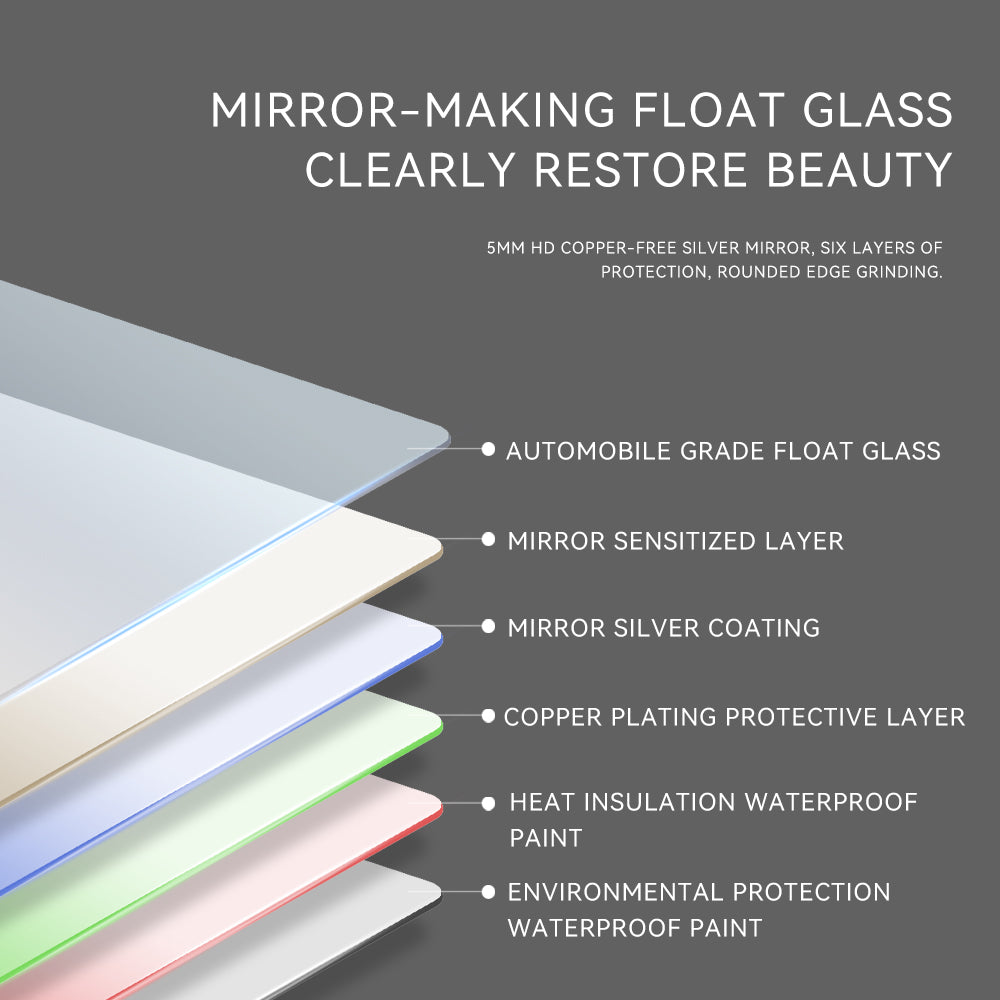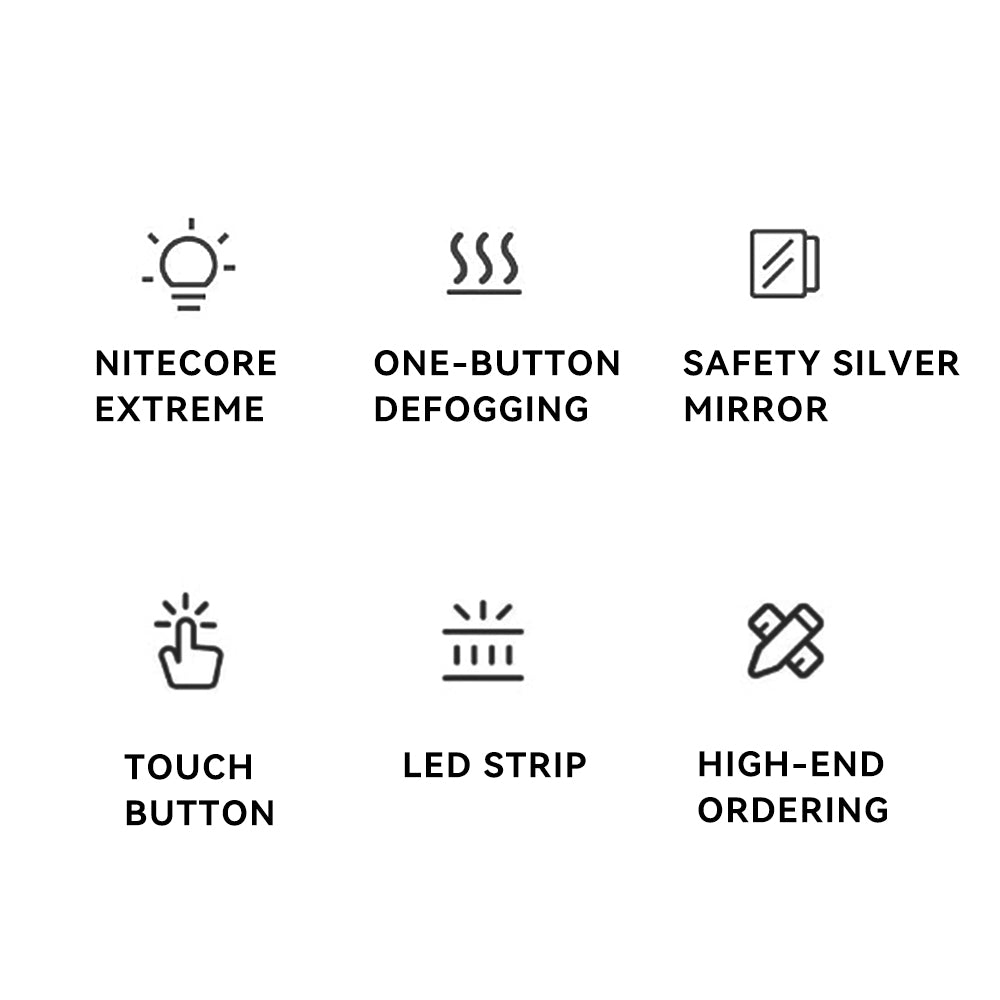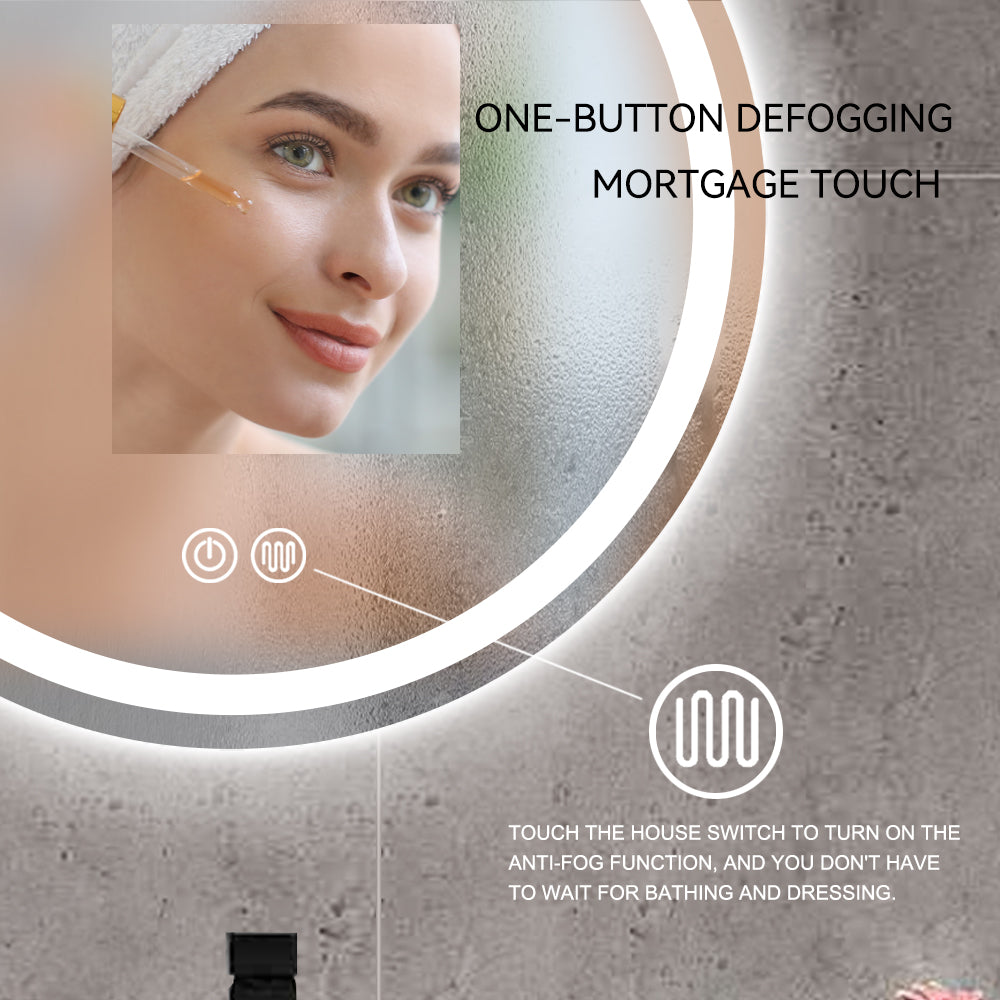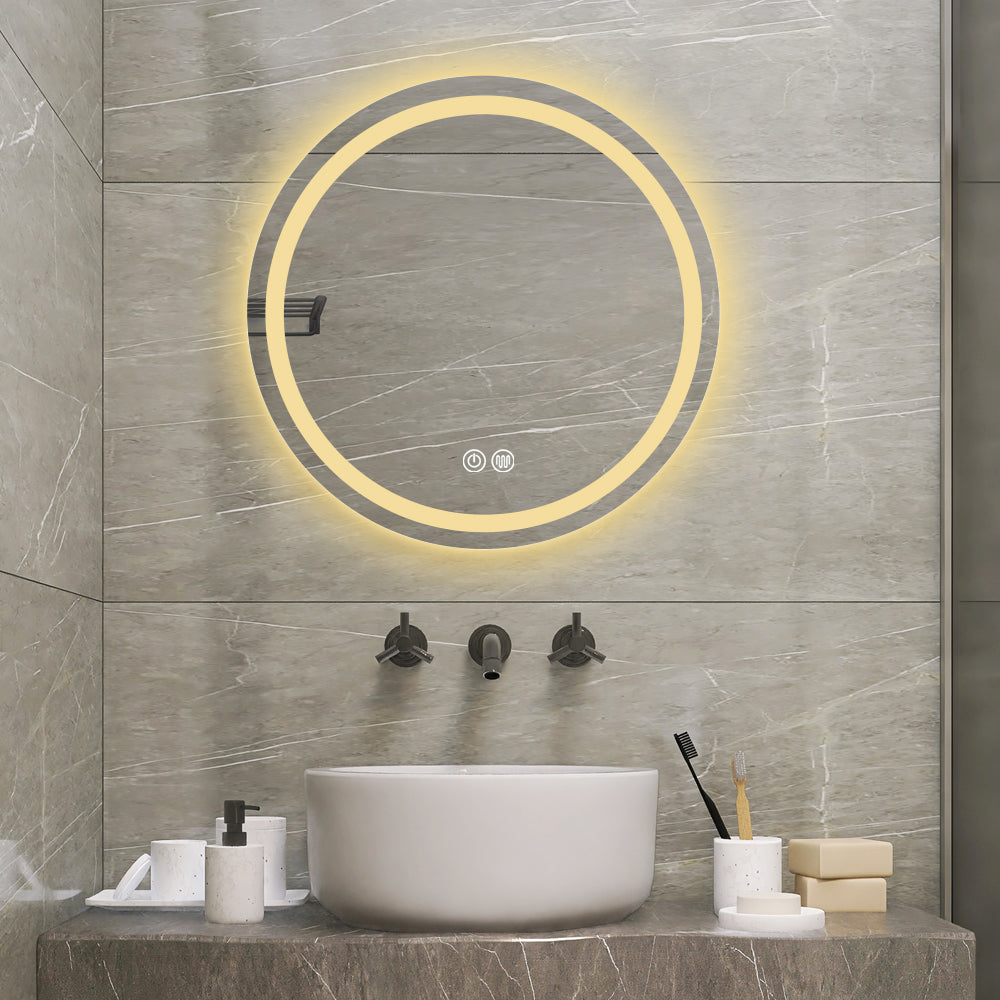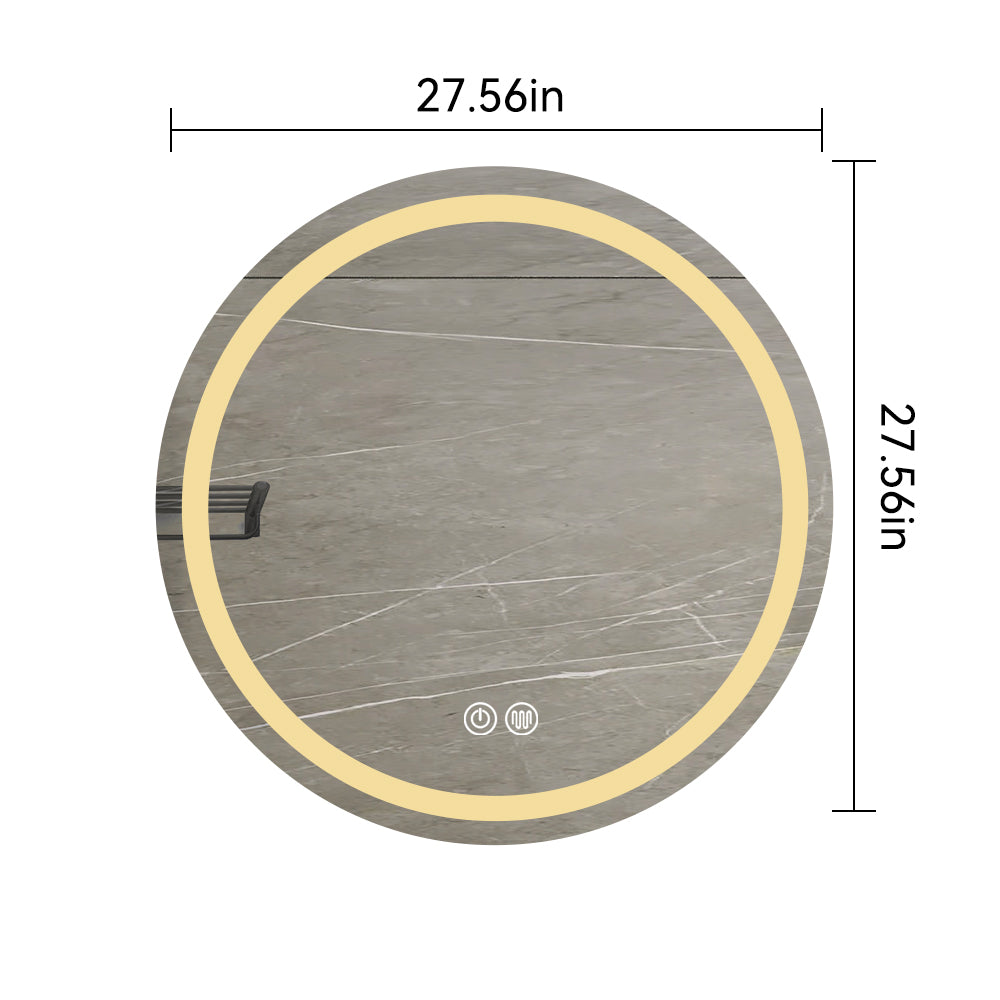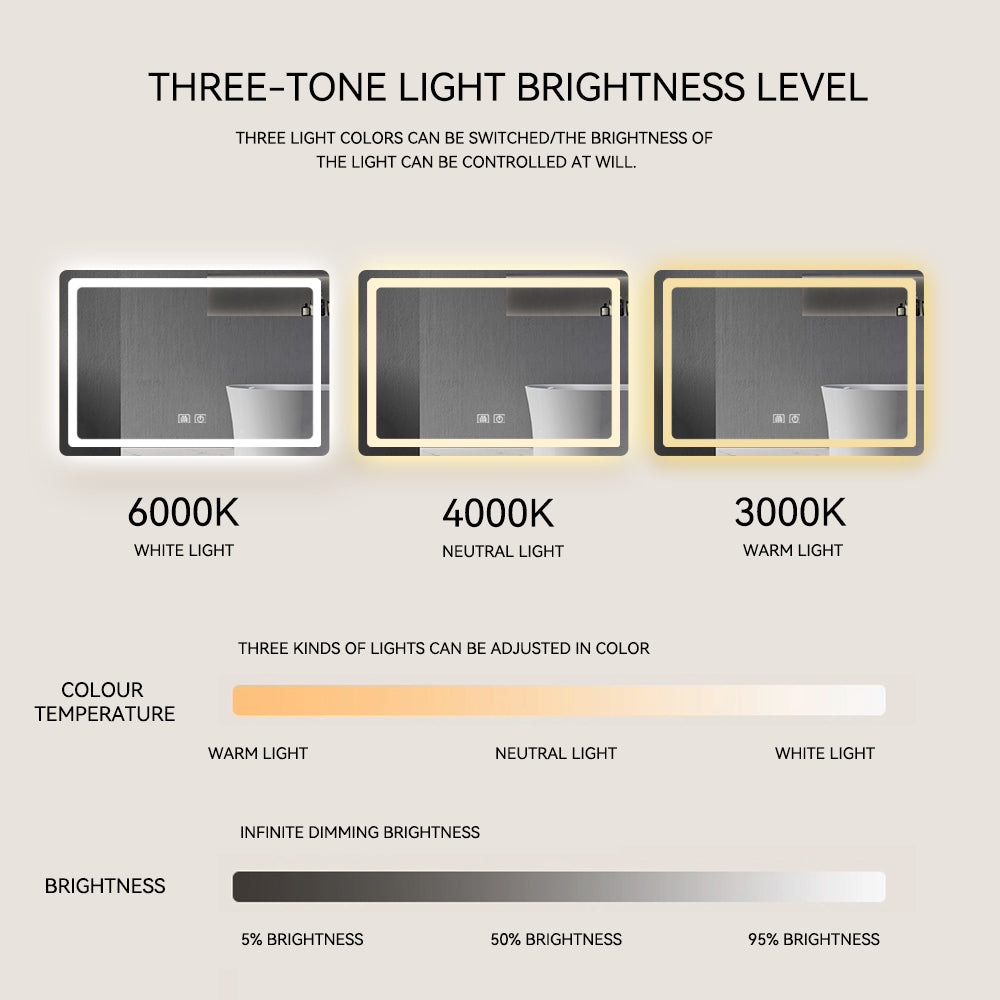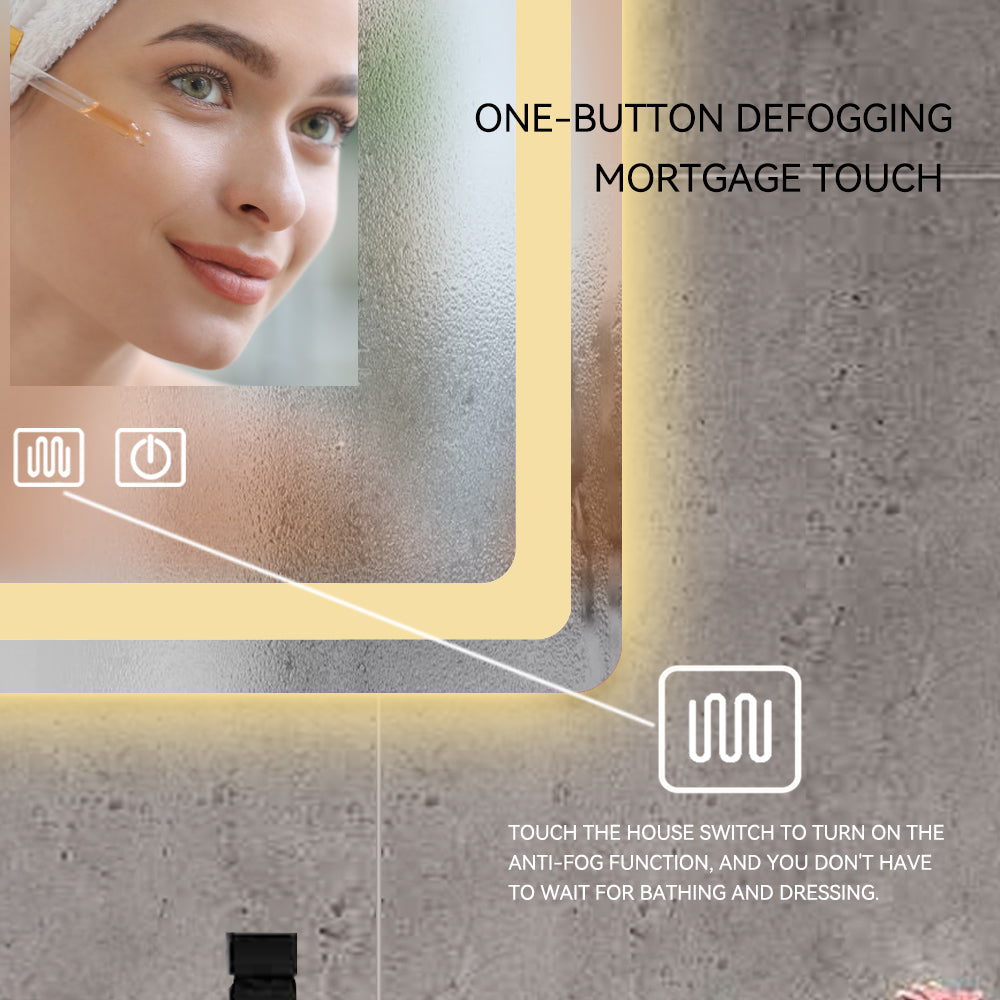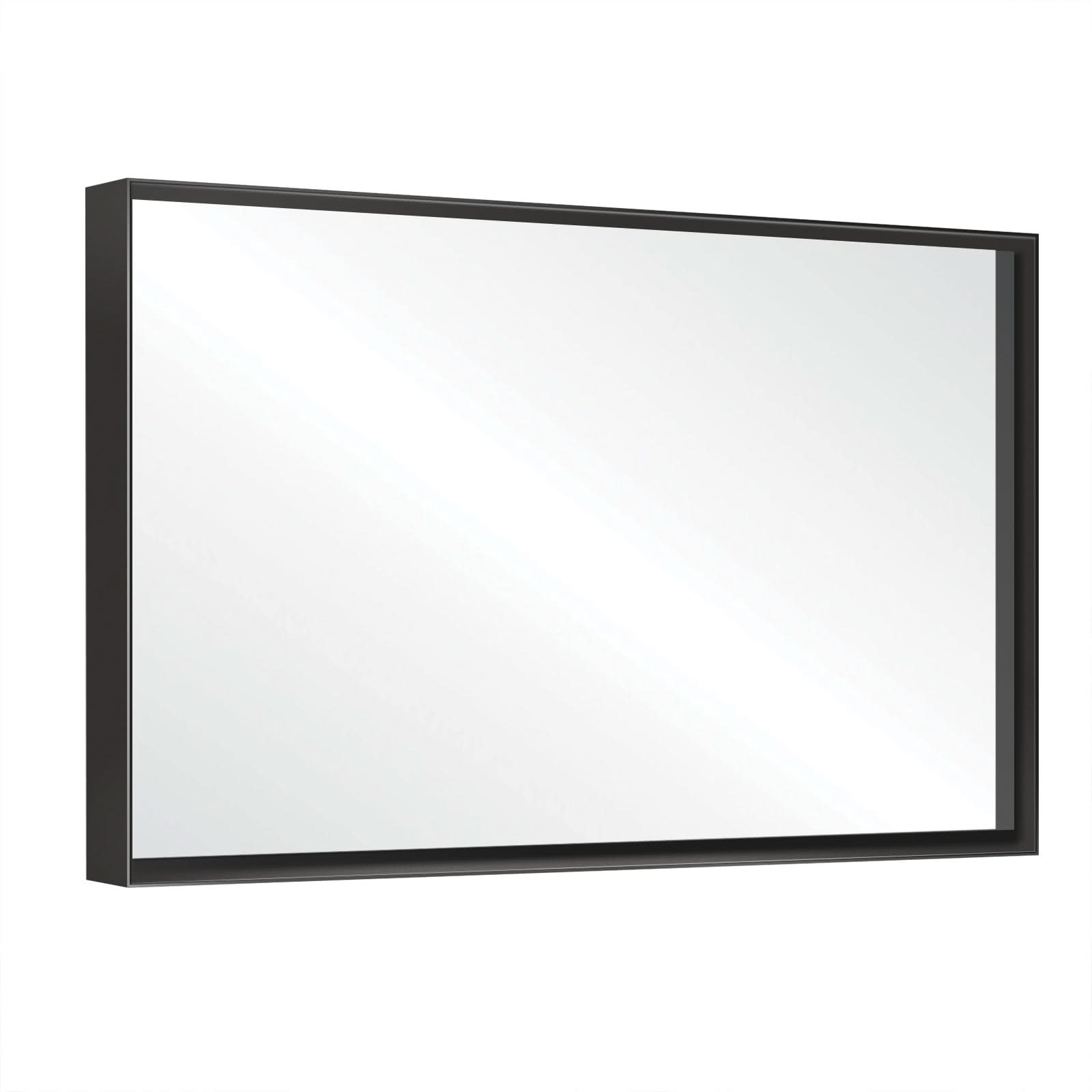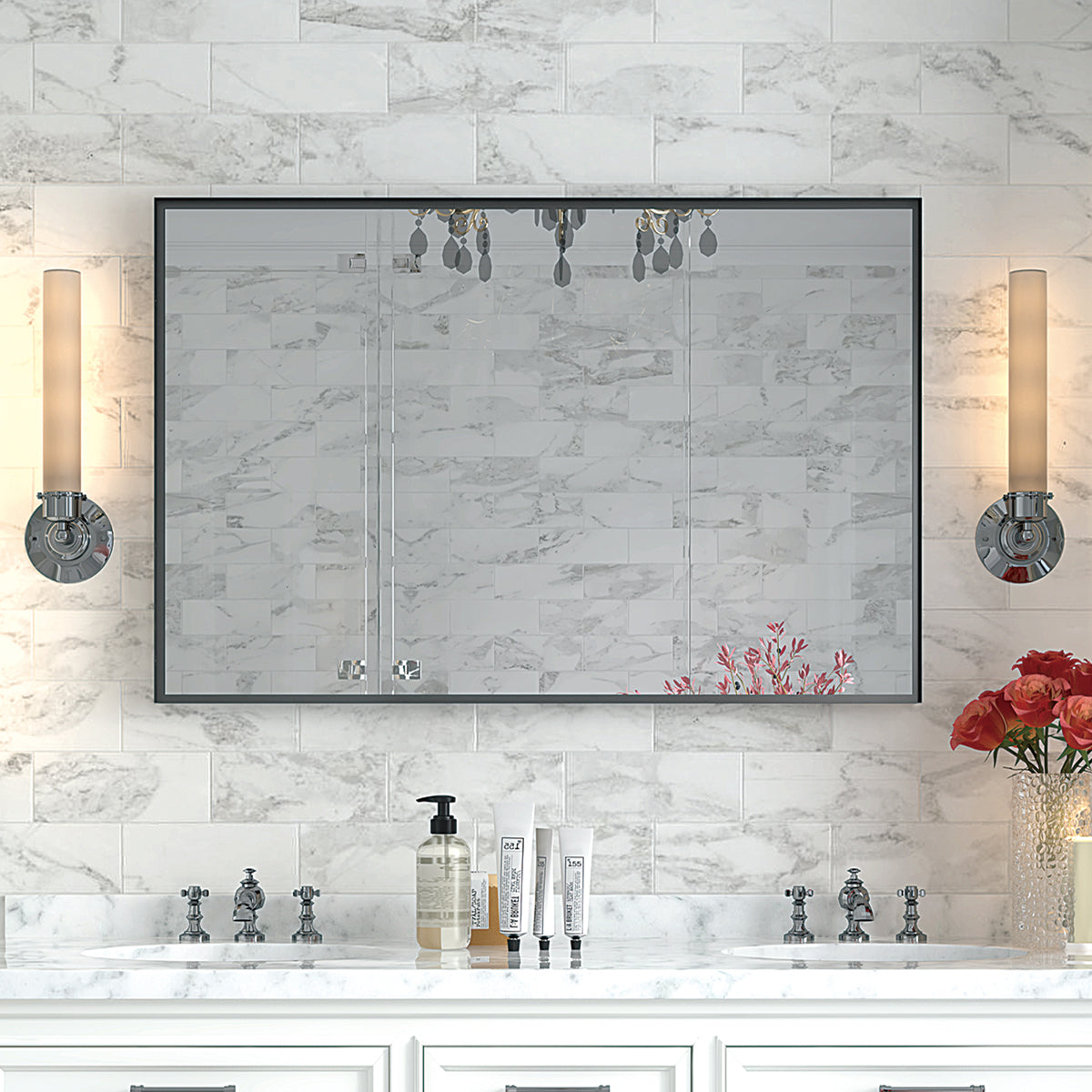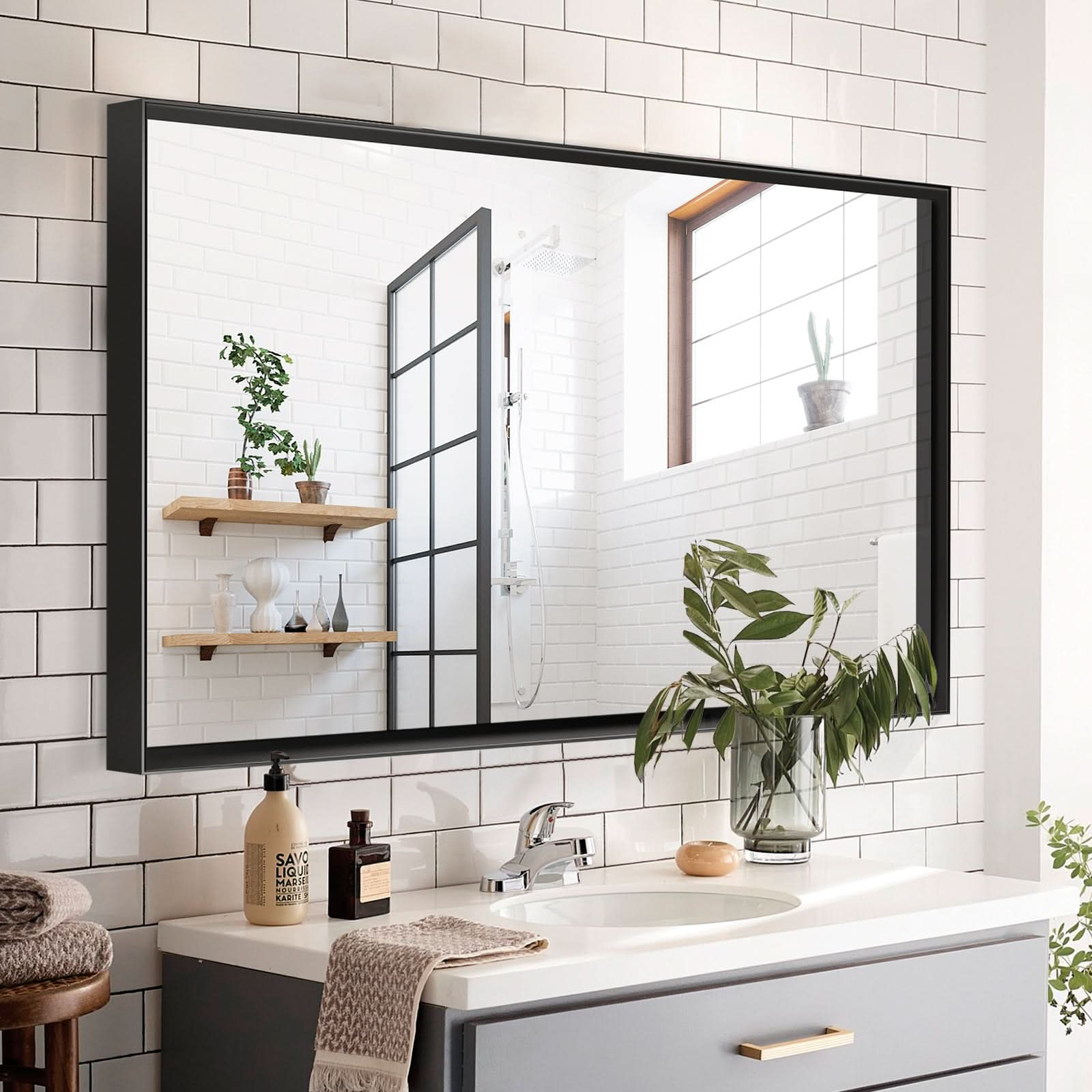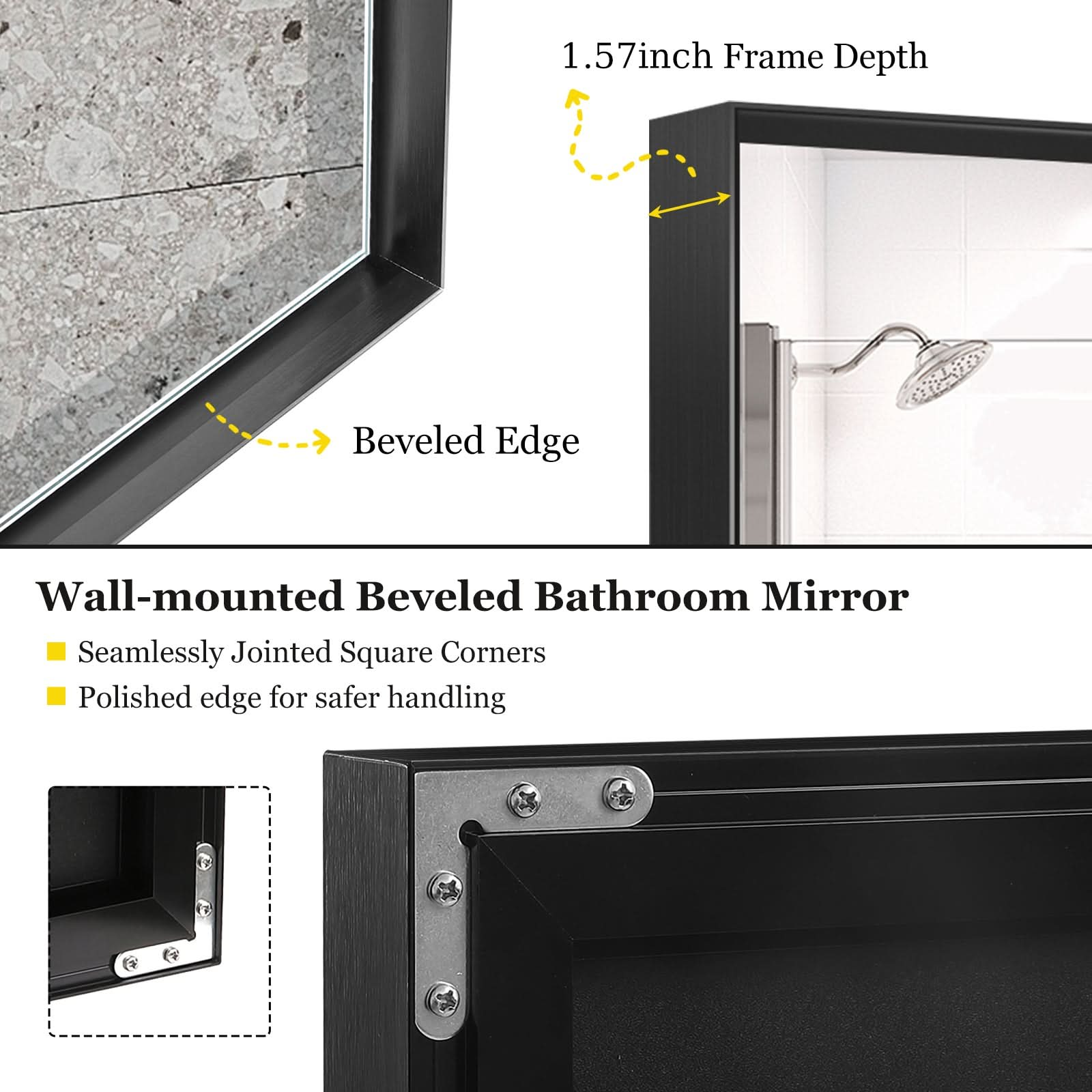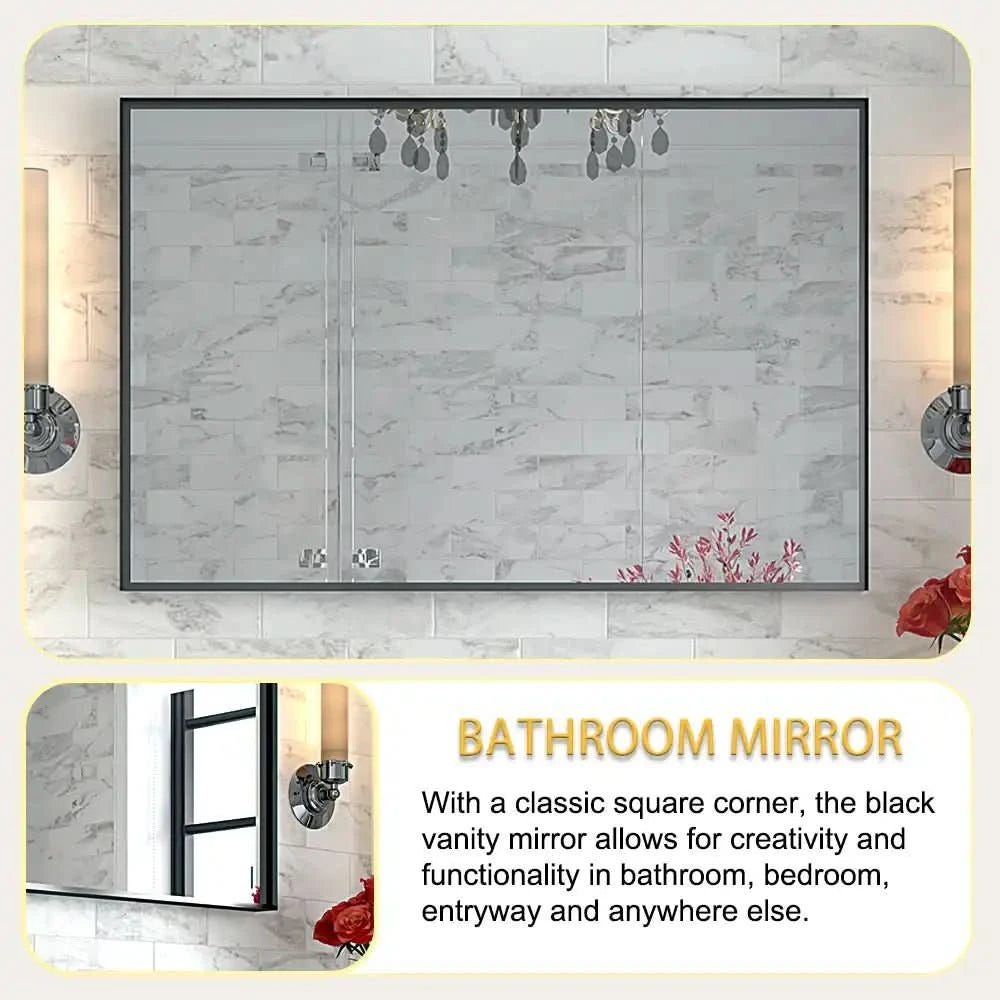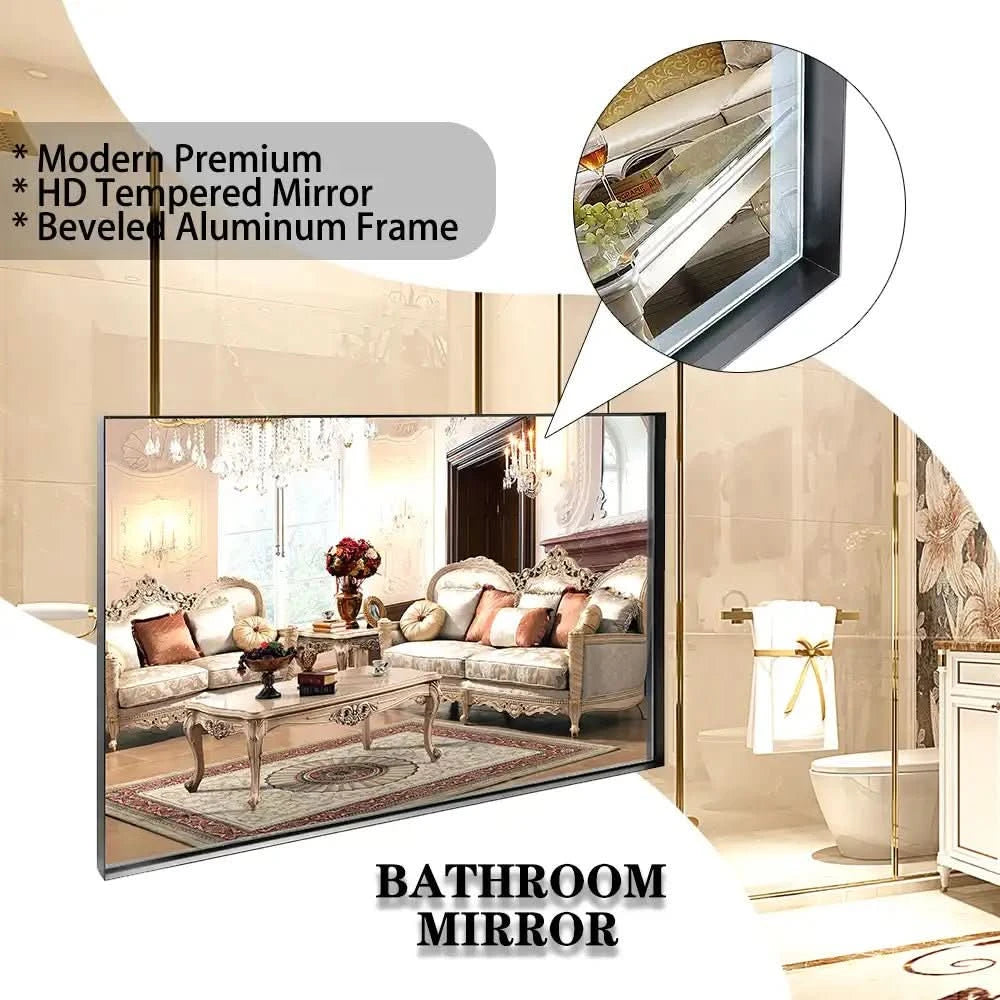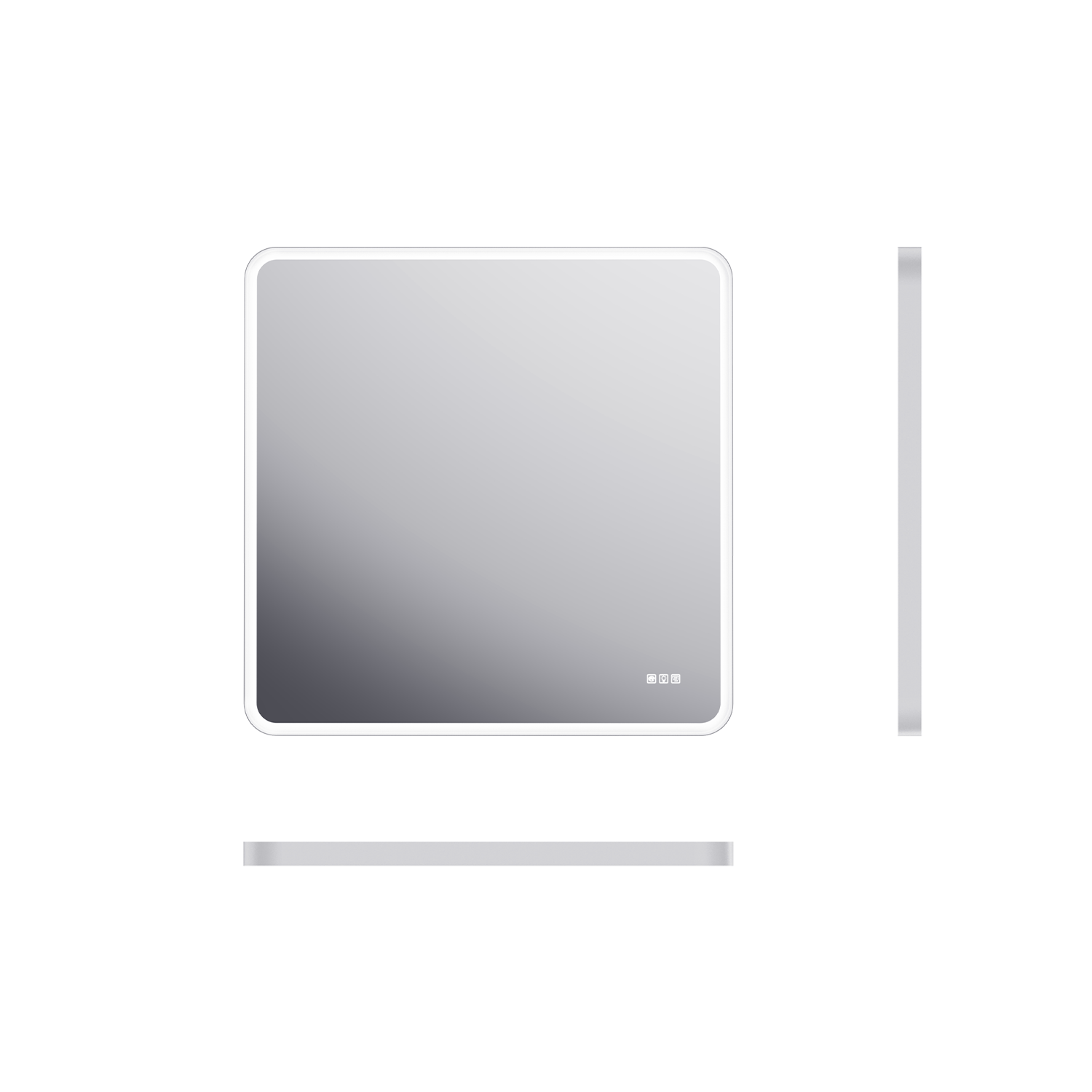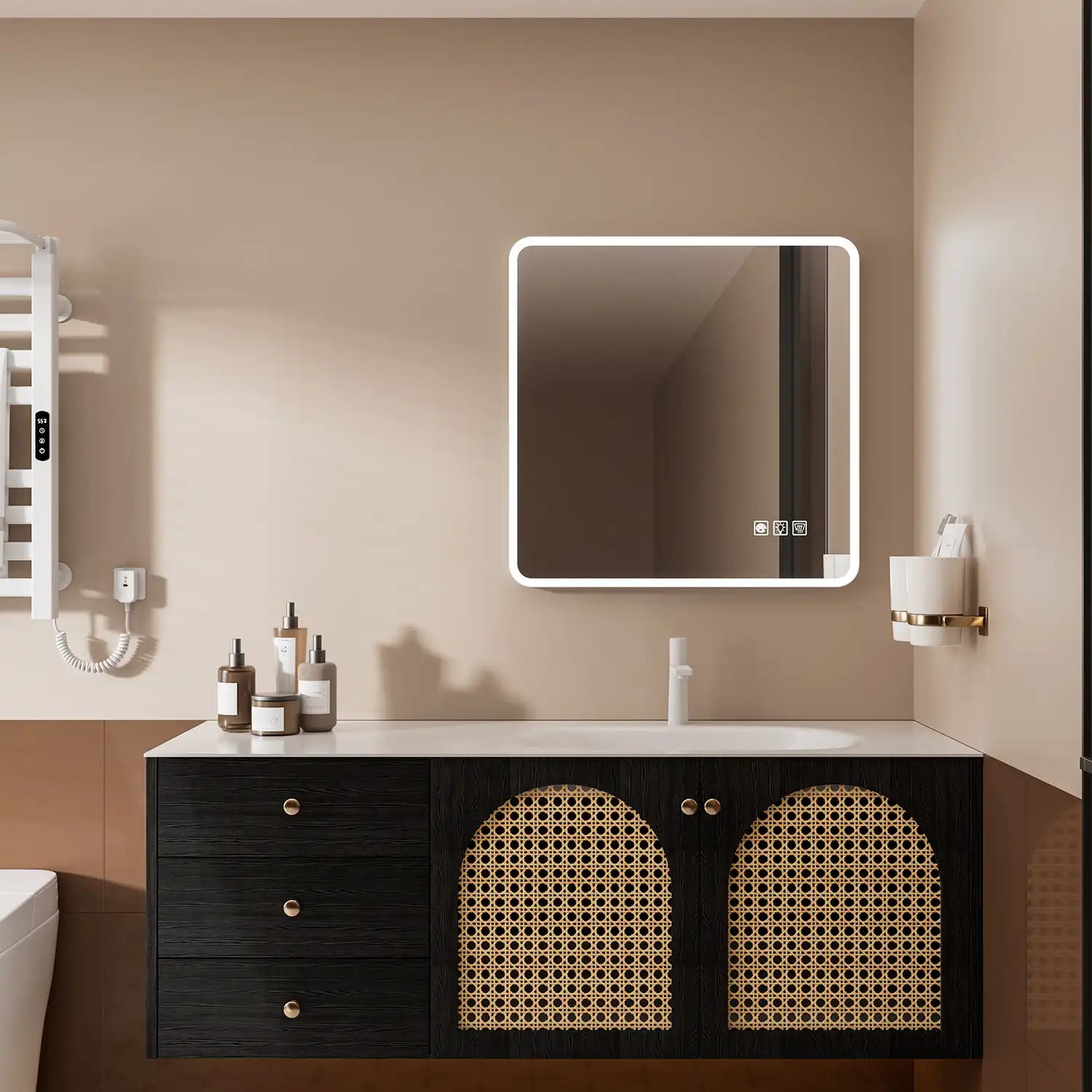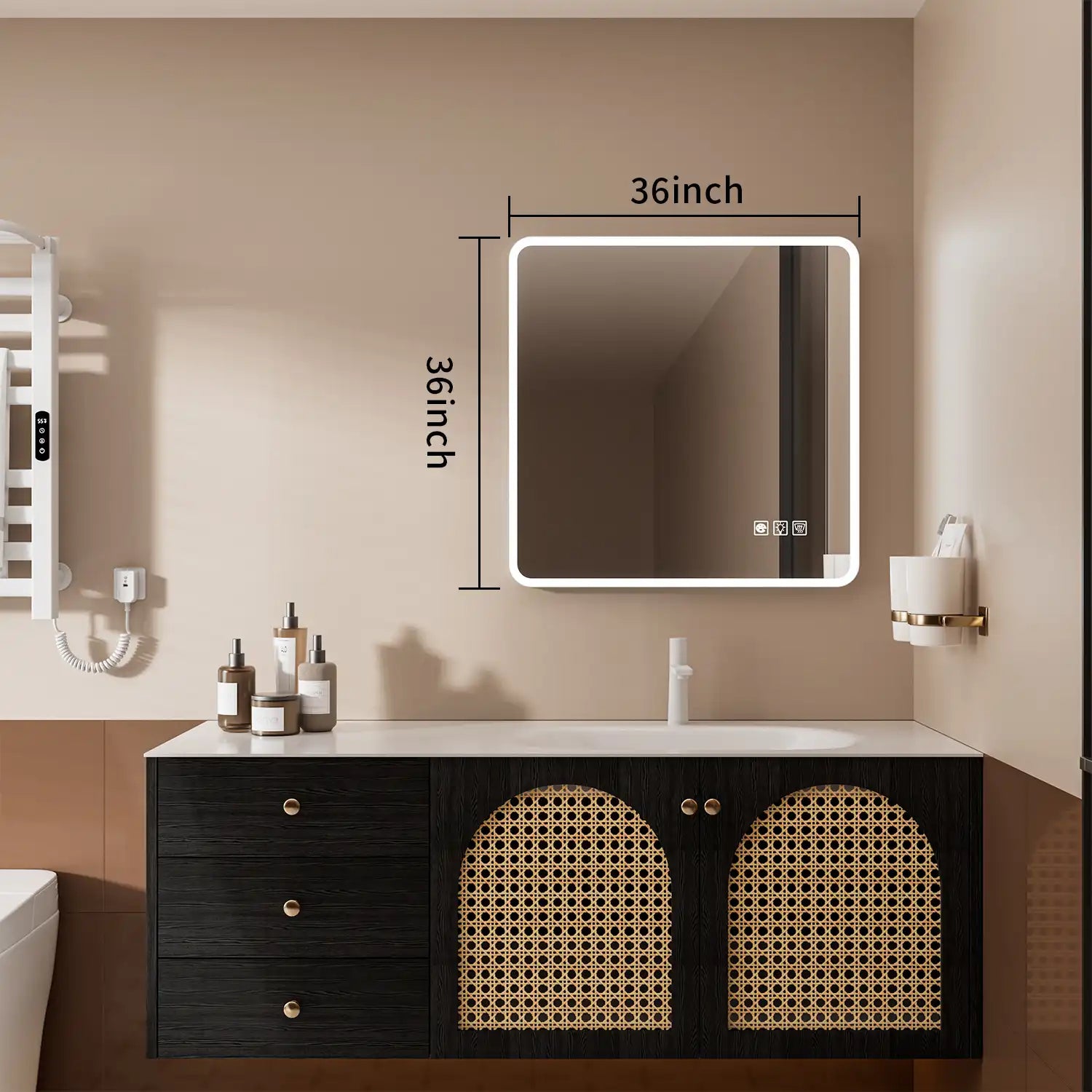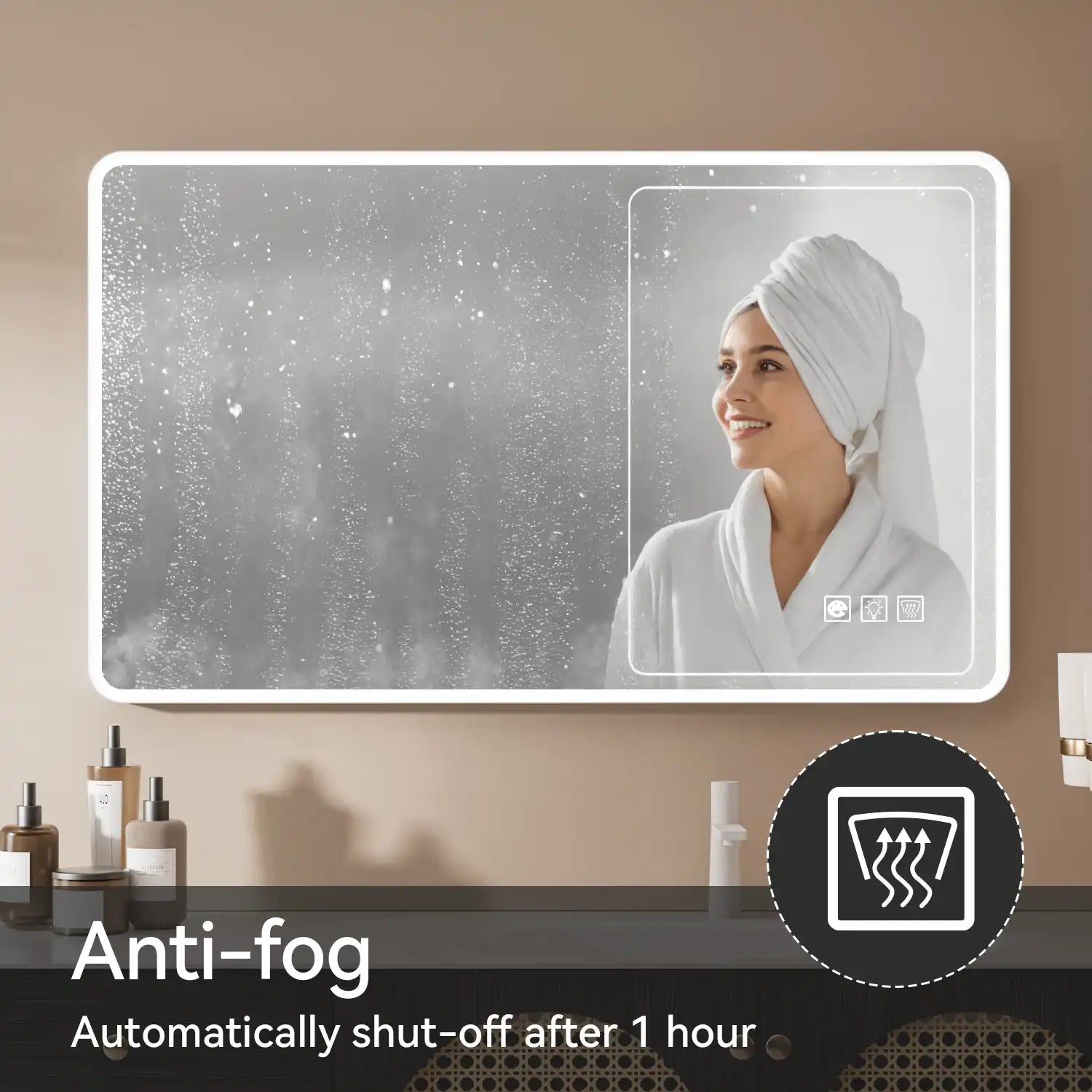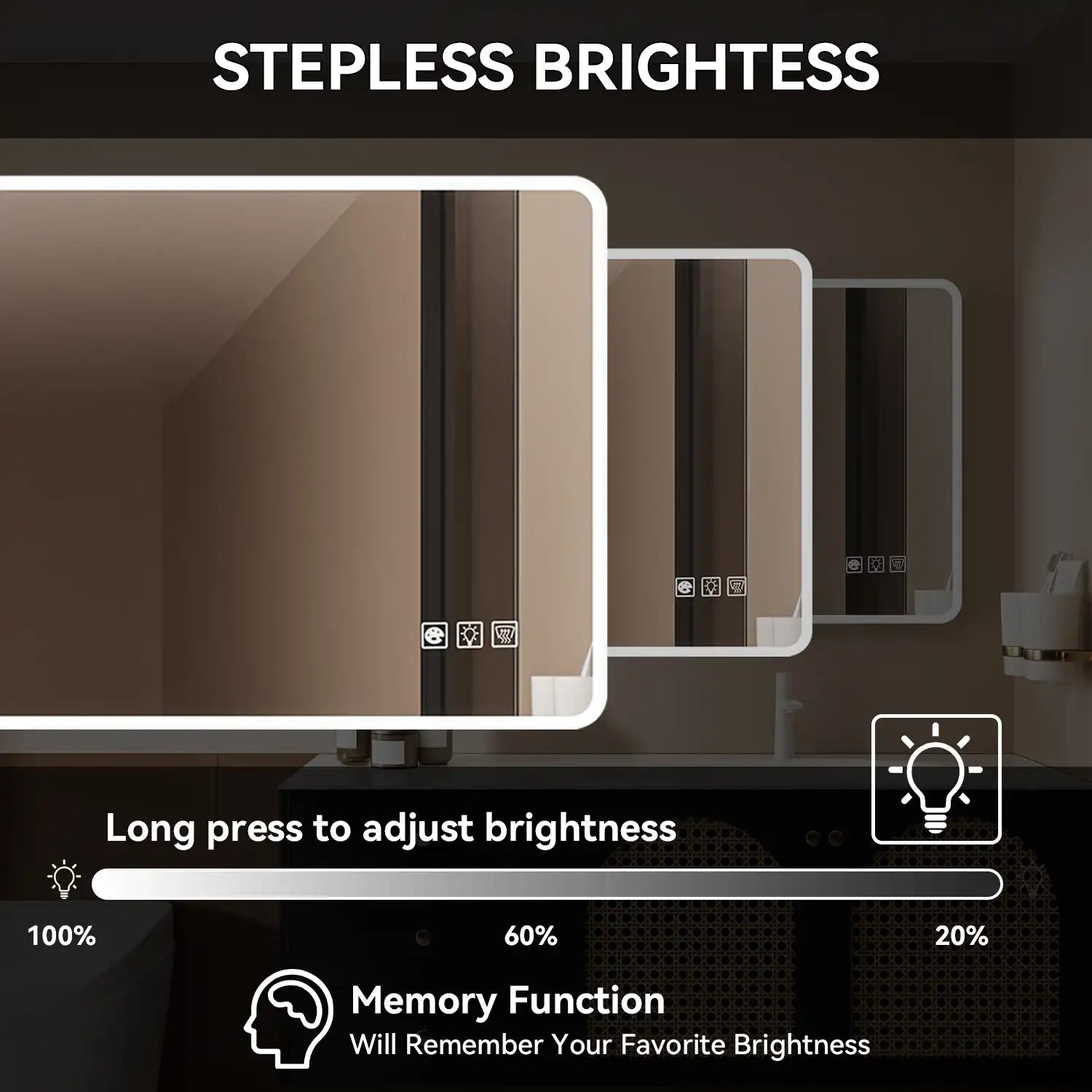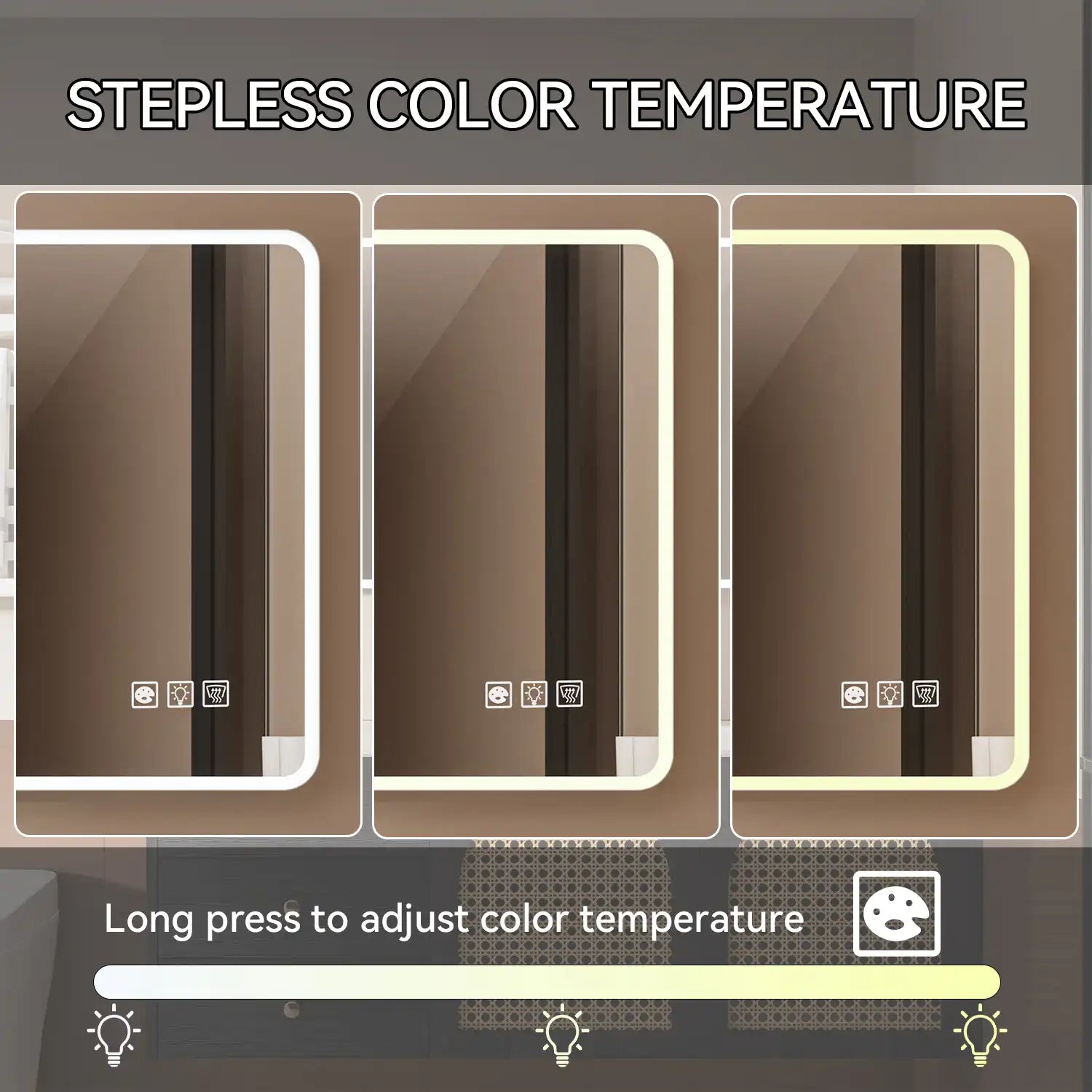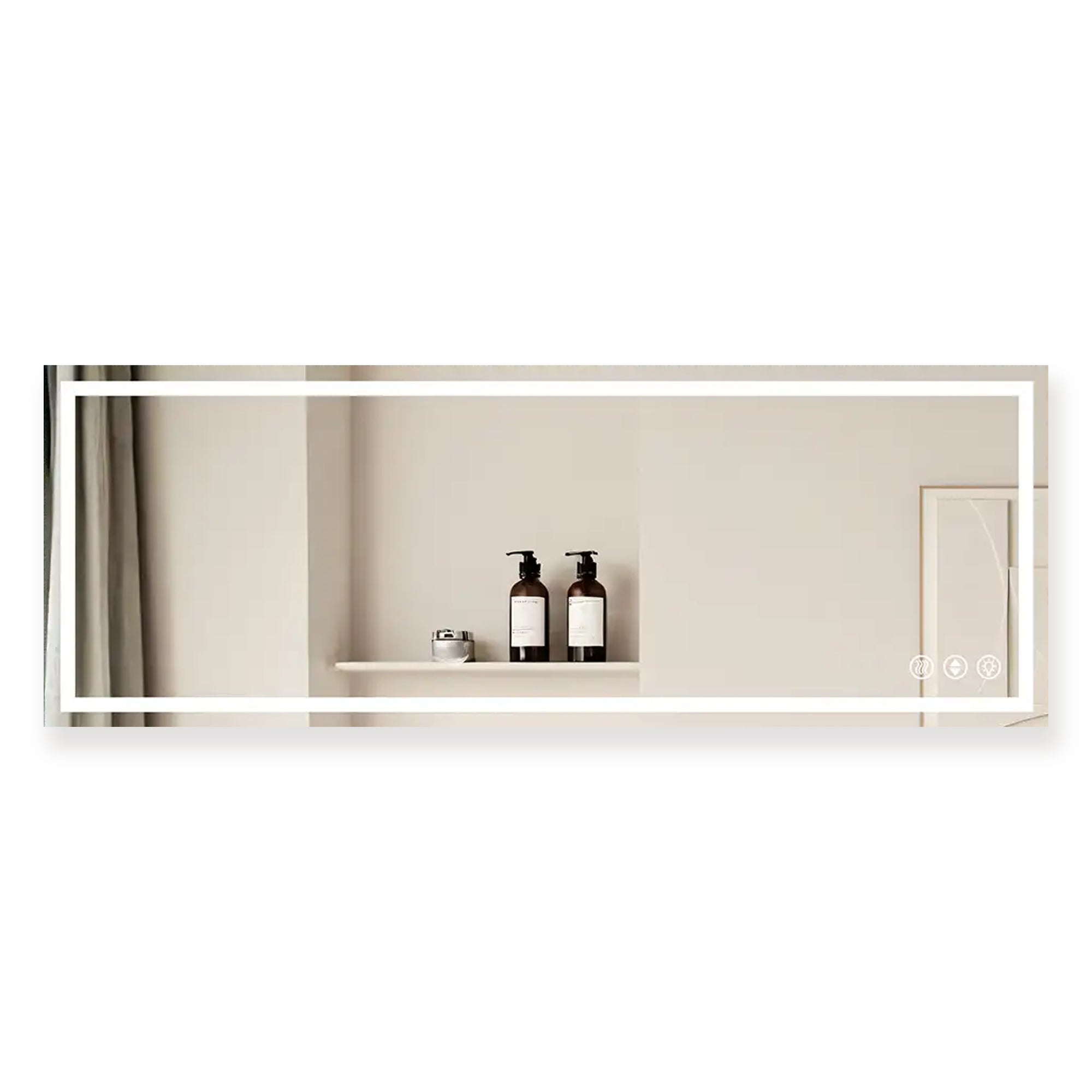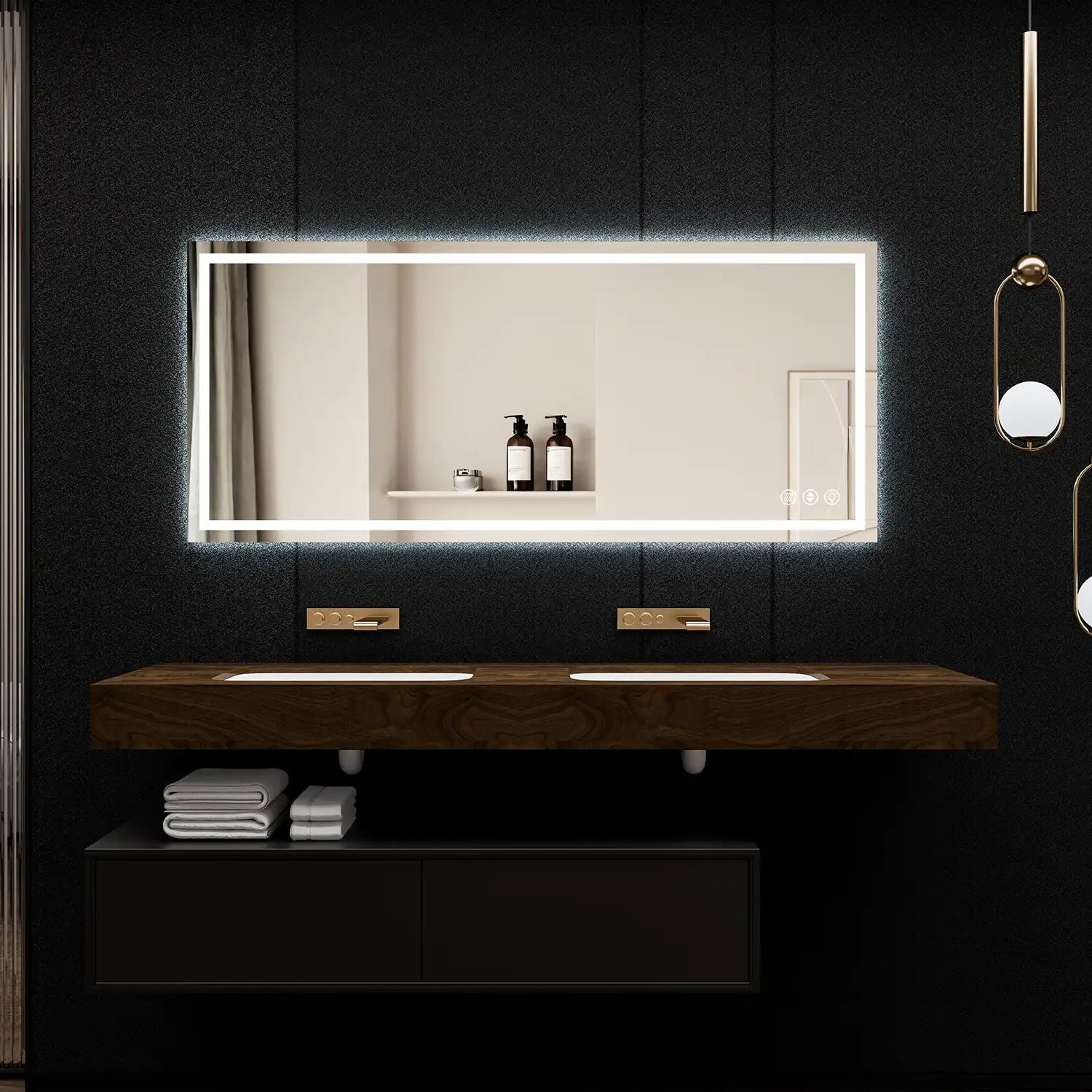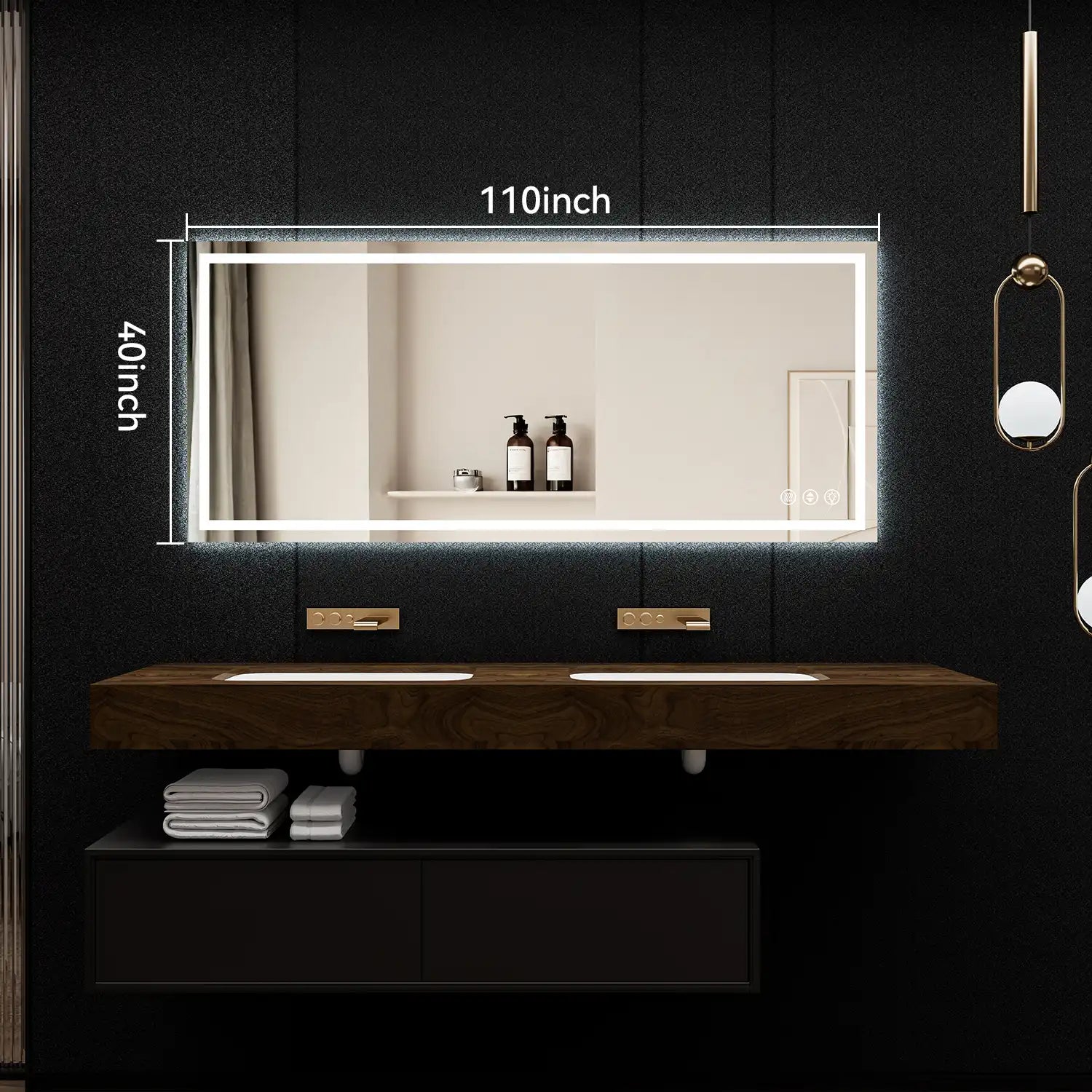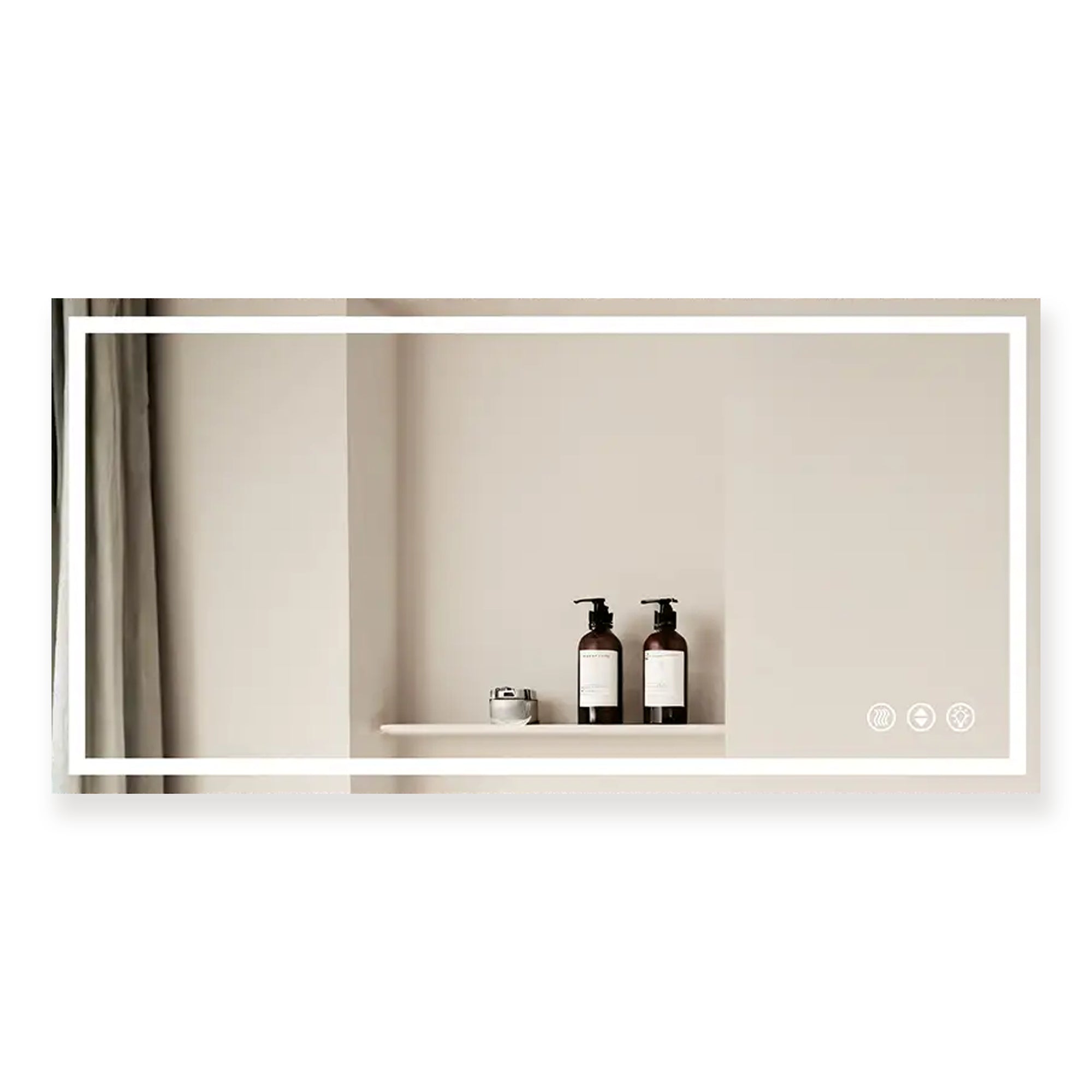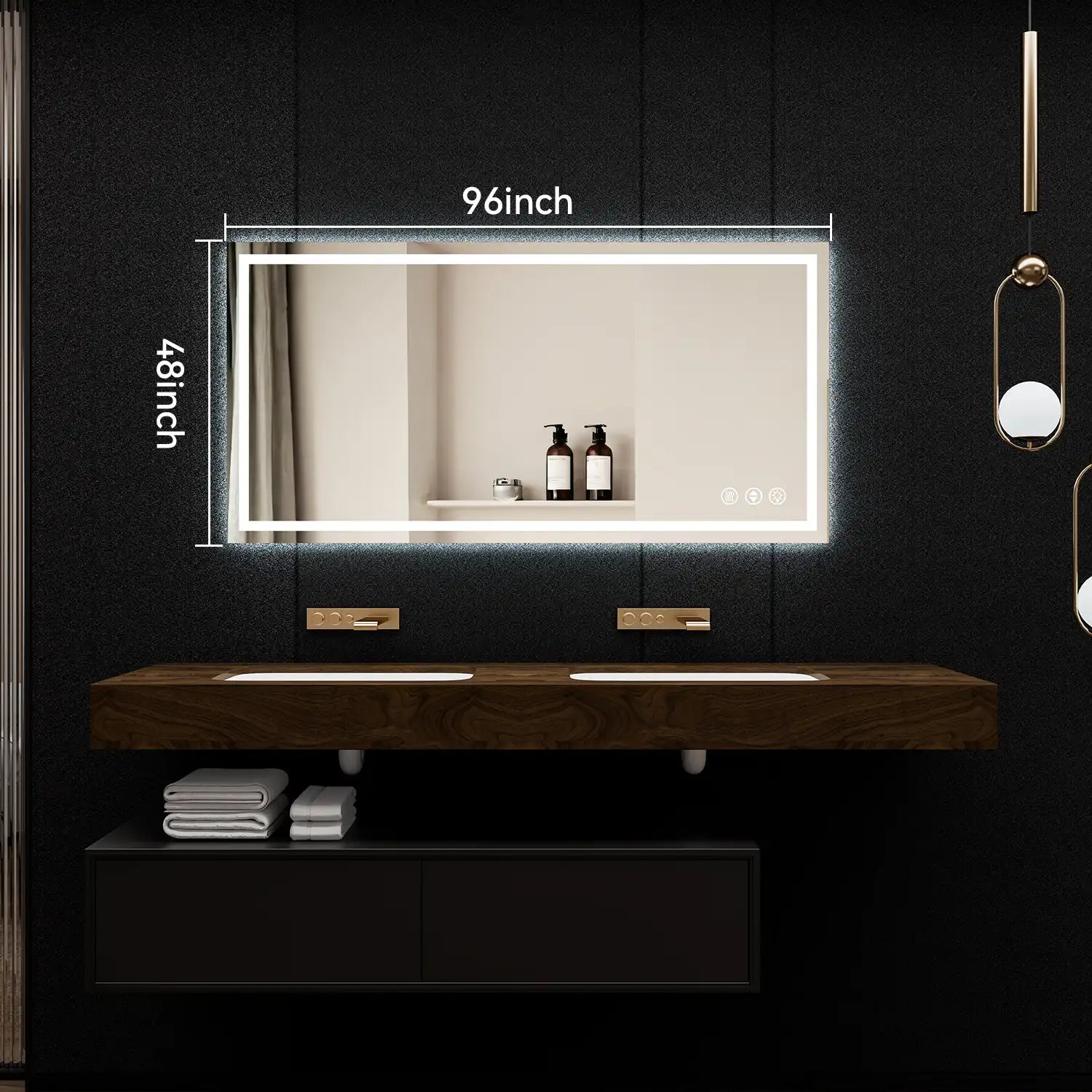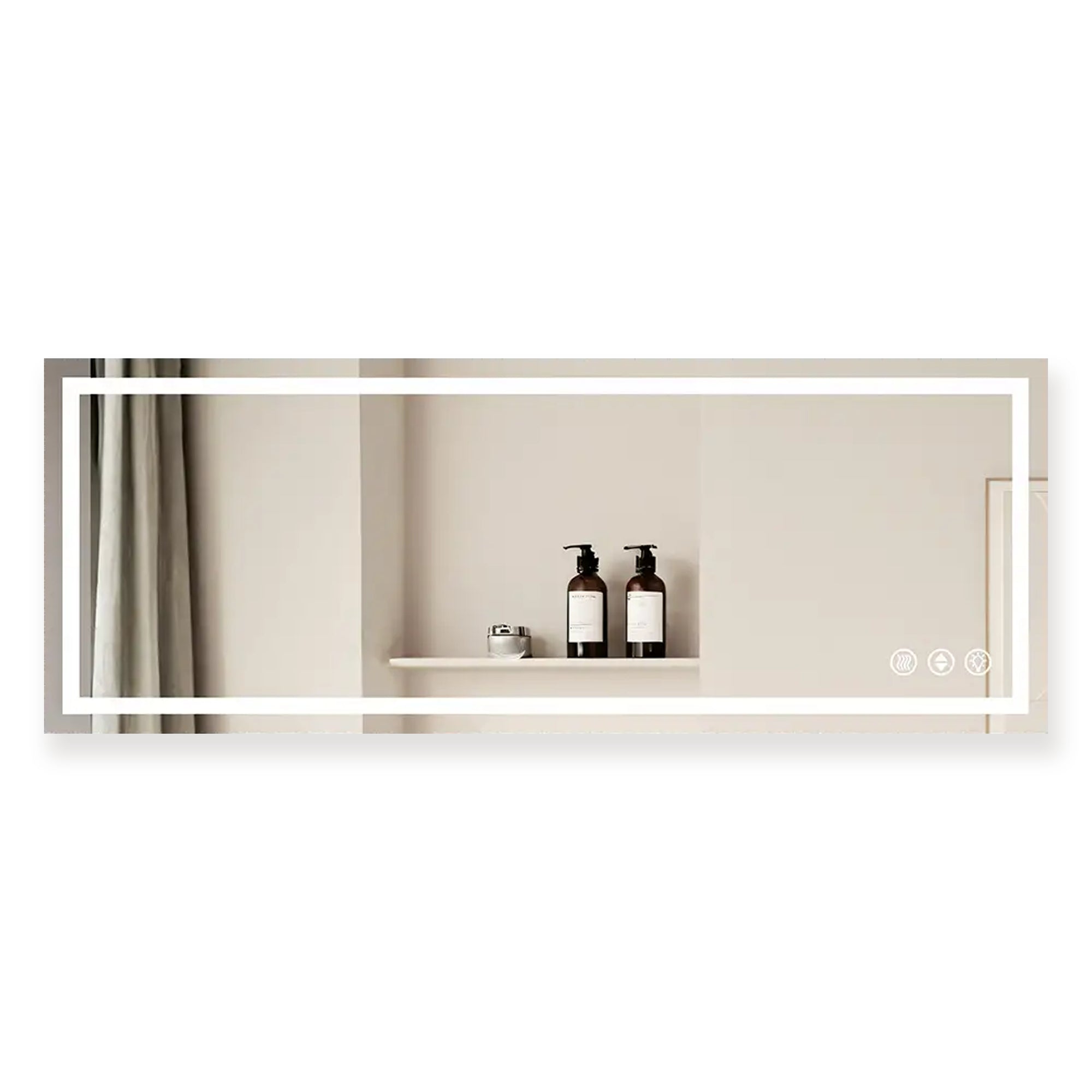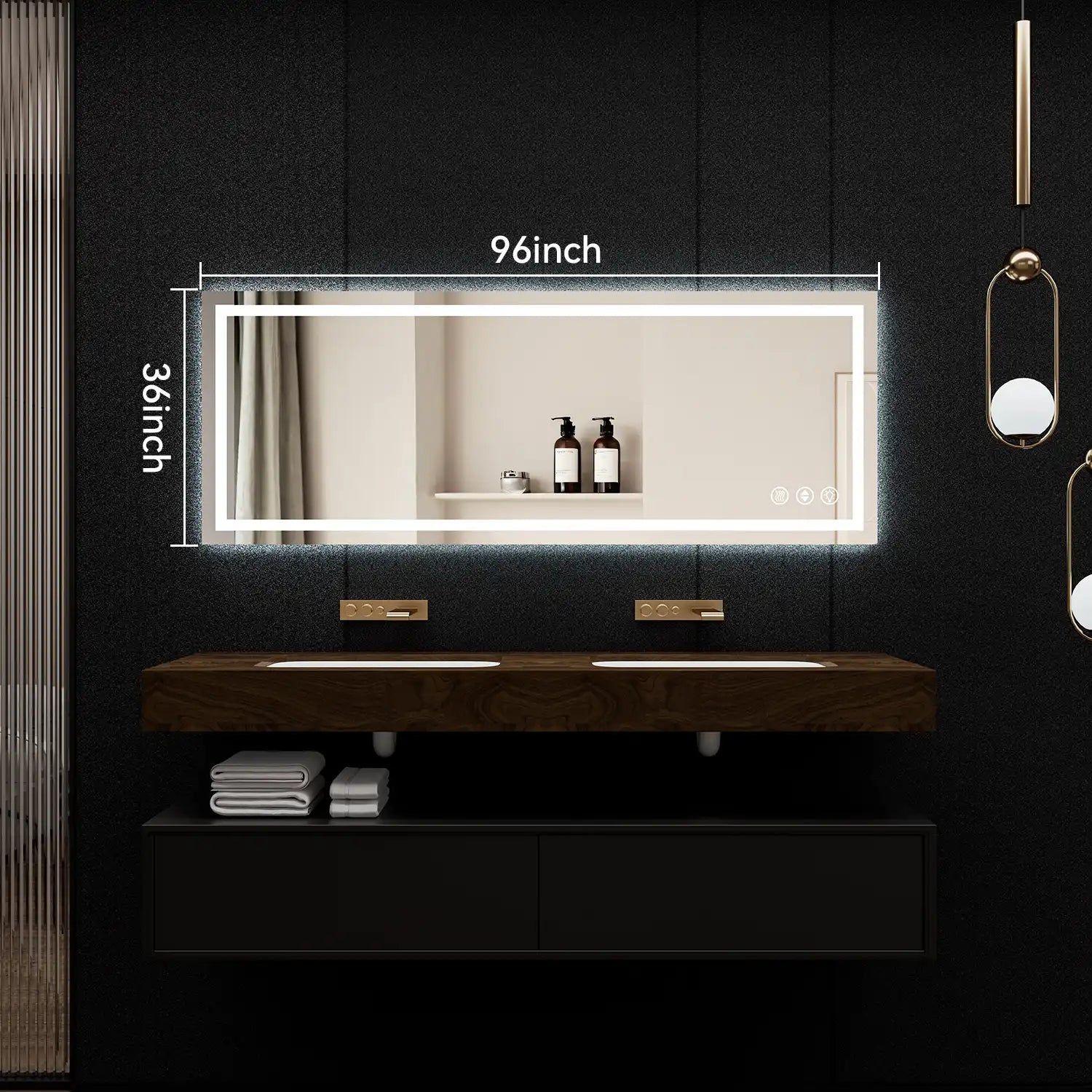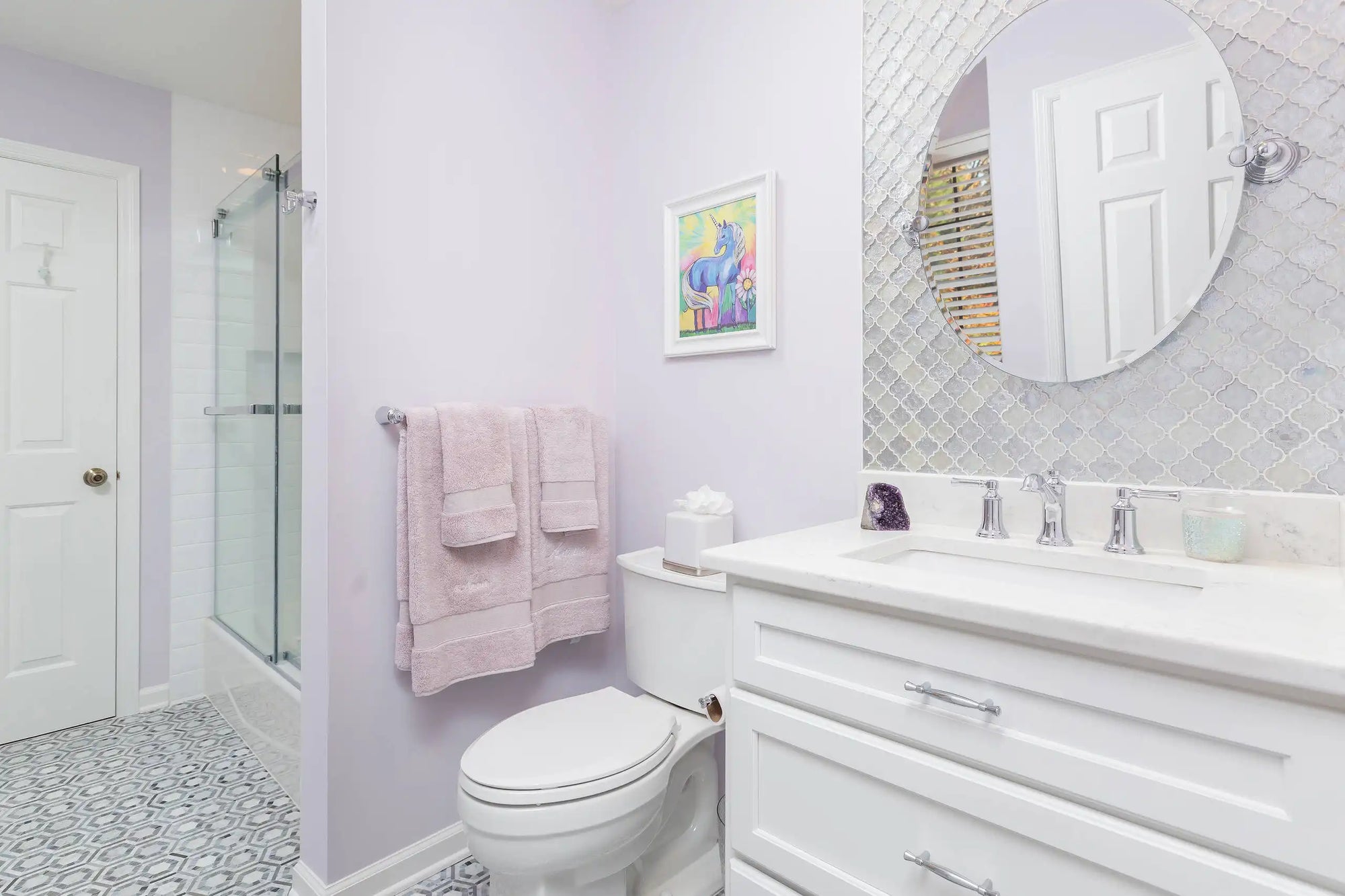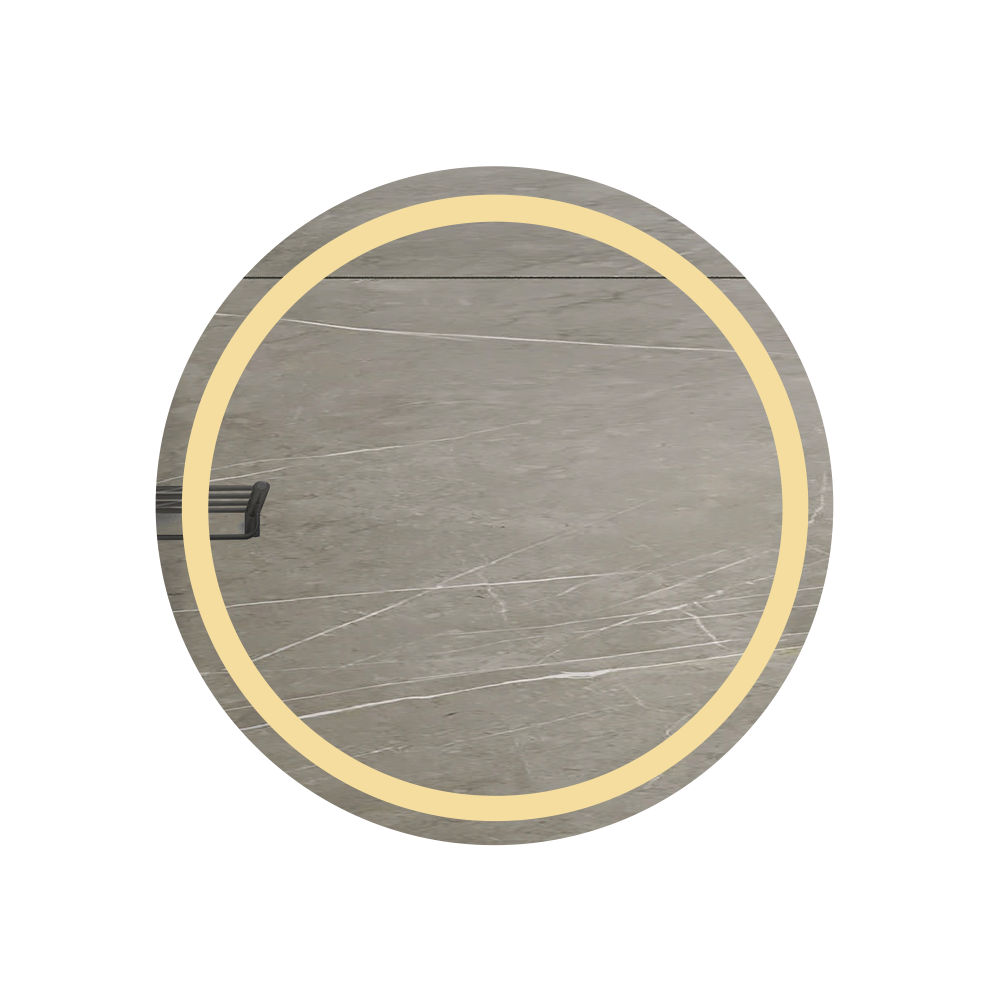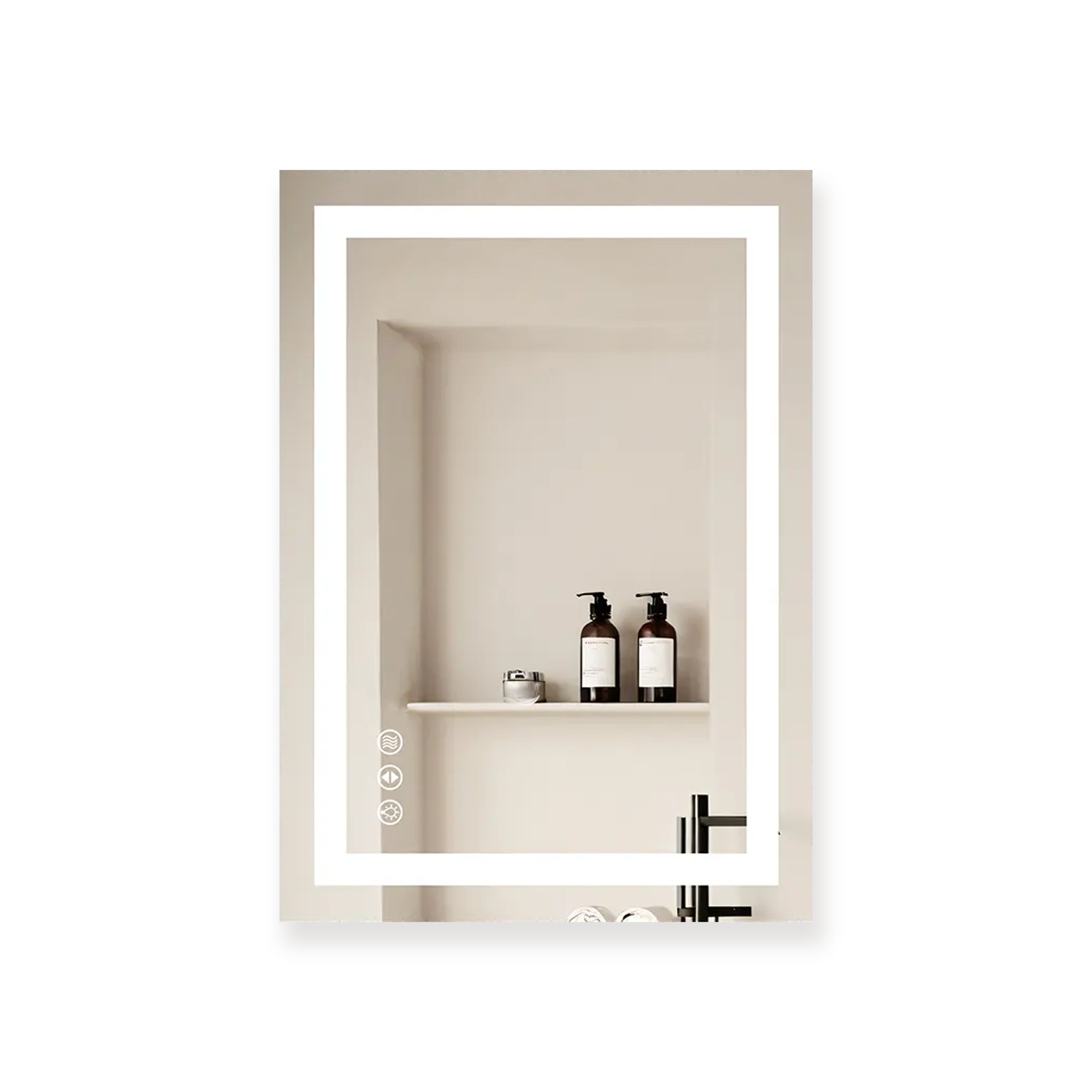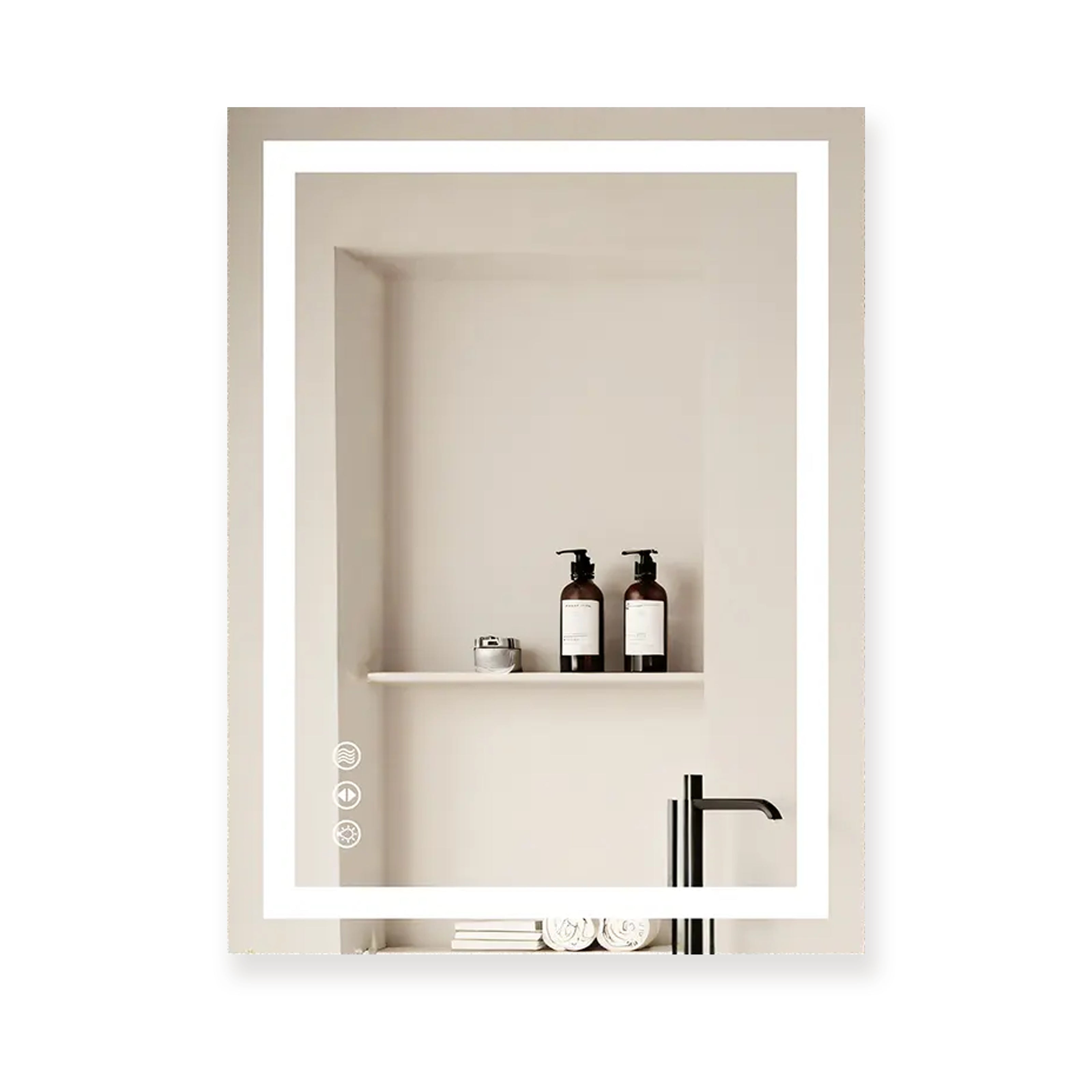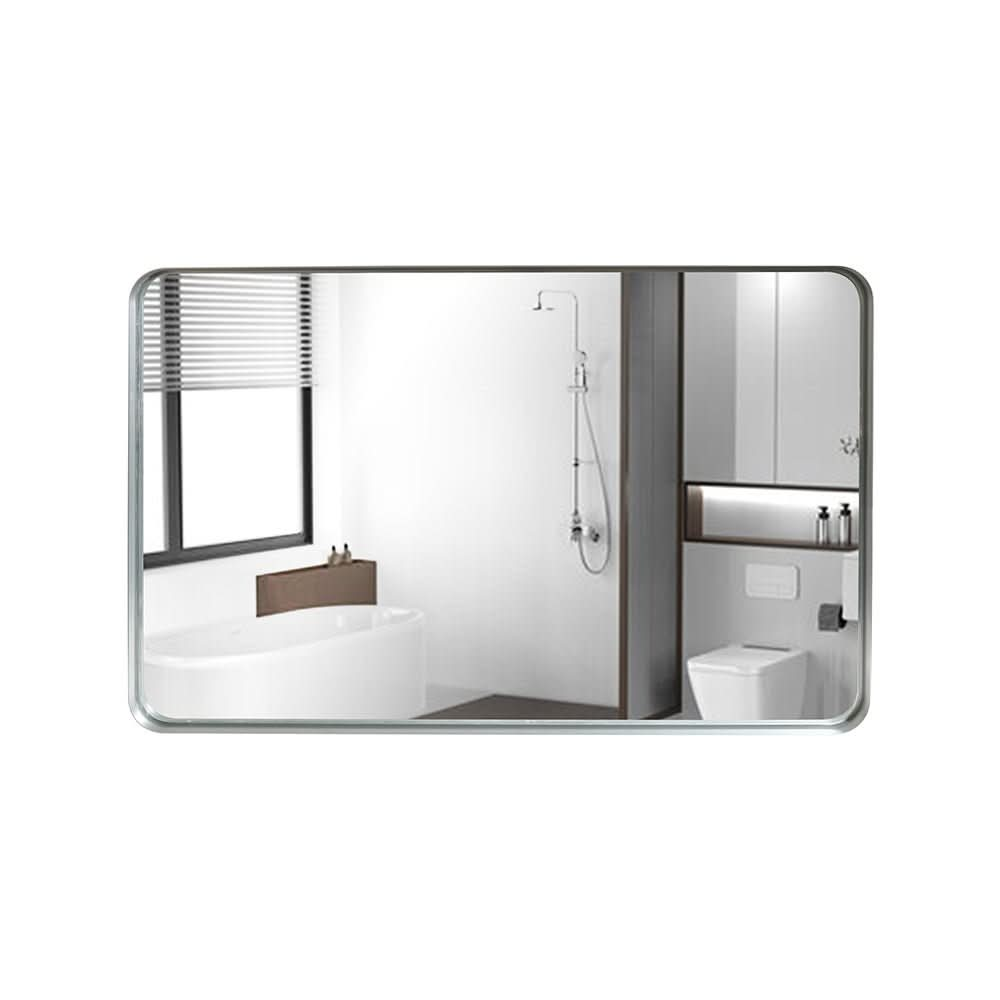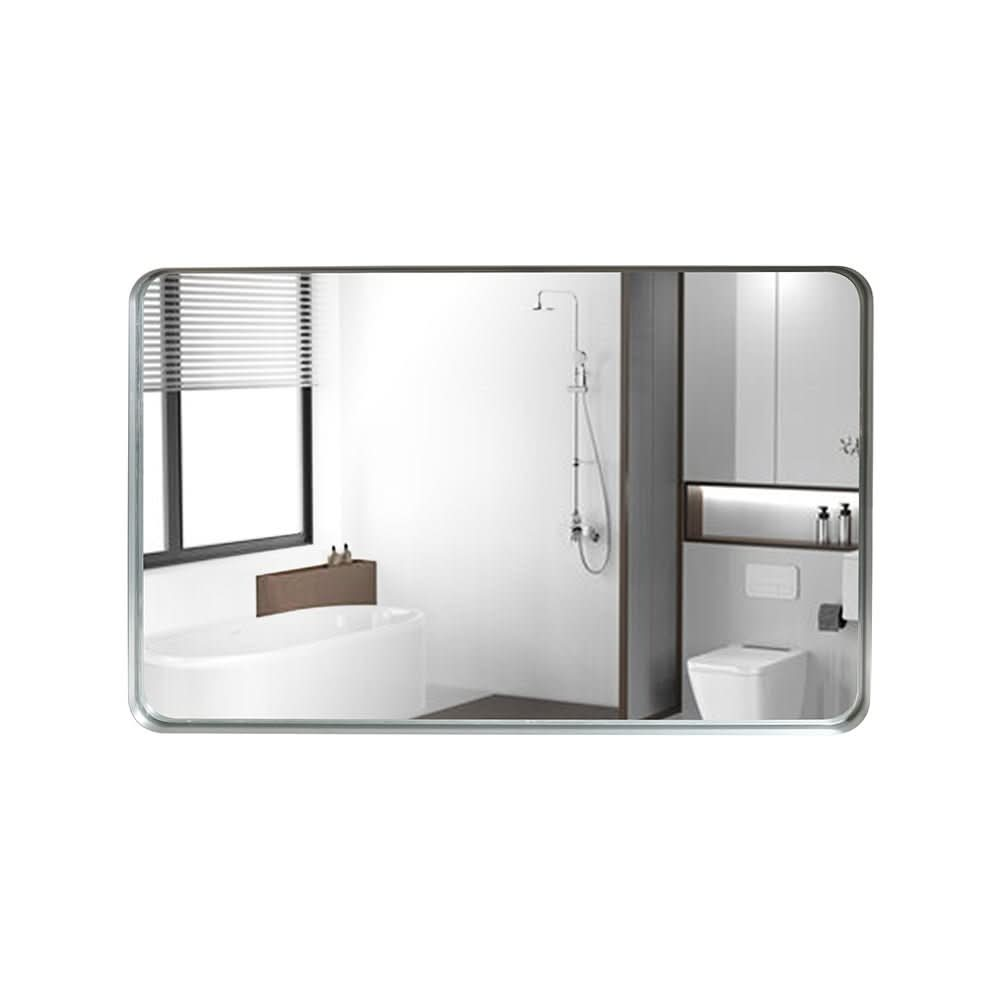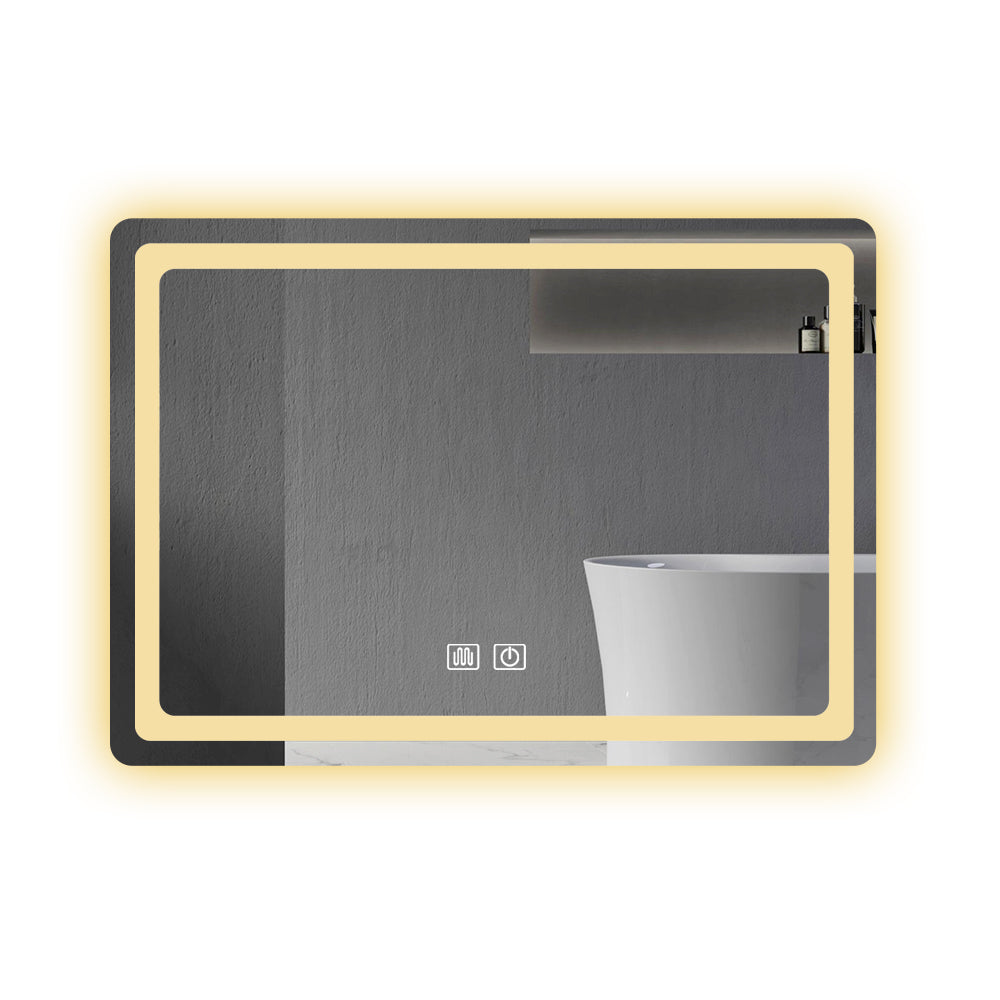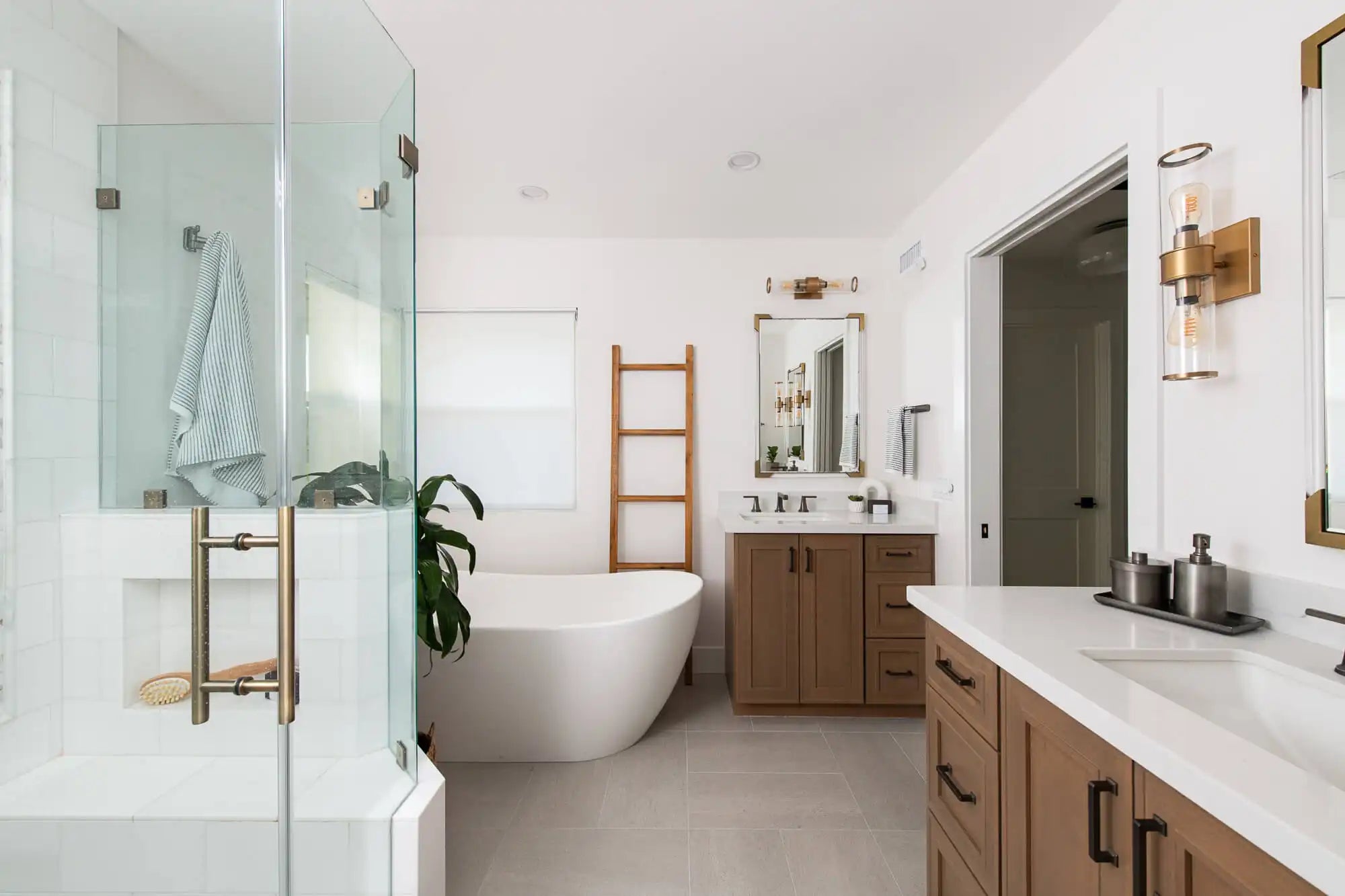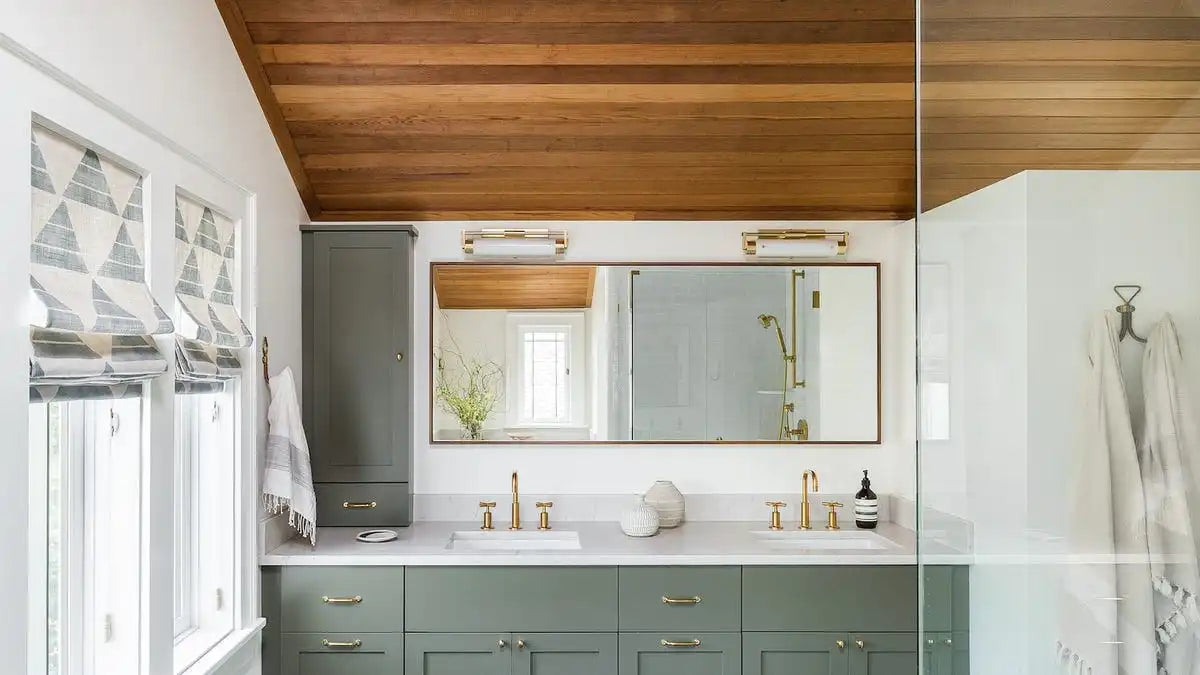Table of Content
- How to Choose the Right Size Round Mirror
- The Frame: More Than Just an Accessory
- Placement & Proportion
- Popular Round Mirror Sizes for Bathroom Vanities
- FAQ: Choosing the Right Round Mirror for Your Vanity
- Conclusion
- Related Articles
You've just finished installing a brand-new 48-inch bathroom vanity. The countertop looks spacious, the storage is perfect—but when it comes to the mirror, things suddenly get tricky.
- A mirror that's too small makes the vanity look unfinished and forces you to lean in just to see your reflection.
- A mirror that's too large pushes against your lighting fixtures, overshadows the vanity, and makes the whole wall feel cramped.
This is exactly why so many homeowners search for one specific answer: what size round mirror for a 48 inch vanity is best?
The rule of thumb is simple: your mirror should be about 70–80% of the vanity width. That means for a 48-inch vanity, the ideal round mirror size falls between 34 and 38 inches, with 36 inches being the sweet spot for both balance and style. If you prefer a double-mirror setup, two 24–26 inch round mirrors placed side by side can create perfect symmetry while offering individual space.
In this guide, we'll break down not only the best mirror sizes for a 48 inch vanity, but also how placement, frame design, and lighting can elevate the entire look and feel of your bathroom.
How to Choose the Right Size Round Mirror
1. Follow the 70–80% Rule
One of the simplest and most effective design principles is the 70–80% rule. This guideline says that your mirror should measure about 70–80% of the width of your vanity. Following this ratio creates visual harmony: the mirror looks intentionally matched, not too small and not too wide.
So what does that mean in real numbers? If your vanity is 48 inches wide, 70–80% equals roughly 34–38 inches. This is the sweet spot where a round mirror feels generous in size while still leaving breathing room around the edges.
Here's why this range works:

If you're debating whether to go smaller or larger within this range, think about the look you want:

2. Don't Forget the Mirror Height
While width usually takes center stage, the height of your mirror is just as important. A round mirror that's perfectly sized in width but awkward in height can throw off the balance of the entire wall.
The standard bathroom mirror height is usually between 30 and 36 inches. That range works well for most people, but your ceiling height, lighting, and daily habits will determine the right choice.

🔰 Tips
- Make sure the center of the mirror sits at eye level—about 60–65 inches from the floor. This ensures everyone using the bathroom gets a comfortable reflection.
- Also, leave at least 5–10 inches of space between the bottom of the mirror and the top of the faucet. That little gap makes the sink area feel open and prevents water spots from splashing onto the mirror.
If your bathroom is shared, consider the tallest and shortest household members. A taller mirror can accommodate everyone without sacrificing style. And if you're aiming for a clean, modern look, oversized round mirrors that stretch taller can double as a subtle design statement while still being practical.
3. Balance Symmetry and Proportion
Choosing the right diameter is only part of the equation. For a round mirror to truly elevate your bathroom, it needs to feel balanced in its placement and proportional to its surroundings.
Think of how the eye reads a bathroom wall: the vanity anchors the bottom, the mirror centers the view, and the lighting frames the reflection. If any one of those feels off—too far to one side, pressed too close to the mirror, or unevenly spaced—the whole setup looks unintentional.
Here are some key ways to achieve symmetry and proportion:
- Center the mirror above the vanity: A round mirror works best when its midpoint aligns with the center of the vanity. Even a slight shift can feel off-balance because the circular shape naturally draws attention.
- Spacing with sconces: If you're using wall sconces, place them at eye level (around 60–65 inches from the floor) and leave enough space so the mirror isn't pressed against the fixtures. For a 48-inch vanity with a 36-inch round mirror, leaving 4–6 inches between the mirror edge and each sconce usually feels right.
- Consider the faucet line: Make sure there's a 5–10 inch gap between the bottom of the mirror and the faucet. This prevents the reflection from looking crowded while keeping the sink area open and easy to use.
- Think vertically: In bathrooms with high ceilings, you can use a slightly taller or larger mirror (like 38 inches) to draw the eye upward. In a compact bathroom, keeping the mirror slightly smaller (34 inches) prevents the wall from feeling top-heavy.
Round mirrors are particularly powerful at creating symmetry because of their shape. When sized and placed correctly, the mirror becomes the focal point of the wall—anchoring the vanity below while creating a pleasing balance with the lighting around it. Instead of noticing the mirror as a separate piece, the whole setup feels like a unified design.
The Frame: More Than Just an Accessory
1. Thick Frame Round Mirror
A round mirror with a thick frame doesn't just reflect—it anchors the wall. The added border gives the mirror more visual weight, which can be especially helpful if your vanity design is simple and needs a strong focal point. But keep in mind: the thicker the frame, the less reflective area you'll actually use. If your bathroom isn't very large, a chunky frame can make the space feel tighter. This choice works best when you want the mirror itself to be noticed, not just used.

| Pros | Cons |
|---|---|
|
|
2. Slim Frame / Frameless Round Mirror
A slim or frameless mirror is all about keeping things clean and open. With almost no border, you get the largest possible reflective area, which makes a small bathroom look bigger and brighter. This style blends seamlessly with many types of vanities, from modern floating cabinets to transitional designs. On the flip side, it may look understated in a large bathroom unless you pair it with statement lighting or bold wall finishes. If you want your vanity wall to feel light, uncluttered, and contemporary, this is the safest route.

| Pros | Cons |
|---|---|
|
|
3. Rustic / Farmhouse Frame Mirror
A wood-framed round mirror adds warmth and character that glass alone can’t provide. The natural grain or distressed finish ties the mirror into farmhouse cabinetry, shiplap walls, or vintage-inspired fixtures. It makes the bathroom feel more inviting—less polished hotel, more cozy home. That said, a heavy wood frame above a 48-inch vanity can look bulky if you push the size too far. Staying closer to 34–36 inches helps keep the balance right while still delivering that rustic charm.

| Pros | Cons |
|---|---|
|
|
4. Glam / Luxury Frame Mirror
A mirror with a gold or brass frame brings instant elegance. The warm metallic tones echo the finish of faucets and sconces, tying the whole bathroom together in a polished way. In the right setting, this style feels like jewelry for your vanity wall—subtle but striking. Of course, metallic frames do show smudges more easily and usually come at a higher price point. But if your bathroom leans toward luxury or you want to make a 48-inch vanity feel more upscale, a 36–38 inch round mirror with a metallic frame can achieve that effortlessly.

| Pros | Cons |
|---|---|
|
|
Placement & Proportion
Even when you've chosen the right diameter for your round mirror, placement can make or break the final look. A perfectly sized mirror installed at the wrong height or too close to your fixtures will still feel awkward. Paying attention to proportion ensures both comfort and visual balance.
1. Mirror Height Matters
A good rule of thumb is to place the center of the mirror at eye level—about 60–65 inches from the floor. This makes the mirror functional for most people in the household, avoiding the frustration of having to bend down or tiptoe just to see your reflection. If your family members vary widely in height, lean slightly toward the taller end; it's easier for shorter people to look up than for taller people to crouch.
2. Leave Space Above the Faucet
Another common mistake is installing the mirror too close to the faucet. Leaving at least 5–10 inches of space between the faucet and the bottom of the mirror not only keeps the area from feeling crowded but also prevents splashes from hitting the glass every time you wash your hands. This small gap makes the sink area look open and intentional.
3. Double-Mirror Setups
For a 48-inch vanity, many people consider using two mirrors instead of one. If you go this route, choose mirrors around 24–26 inches each and make sure to leave 3–4 inches of wall space between them. That spacing provides breathing room while still looking symmetrical, especially if you have dual faucets. Too little gap will make the mirrors feel crammed together, while too much space breaks the sense of unity.
4. Test Before You Commit
If you're unsure about size or placement, try the painter's tape trick: outline the diameter of the mirror directly on your wall with tape. This gives you a real sense of how it will look once installed. You'll immediately notice if it feels too low, too wide, or too close to your fixtures—before you drill a single hole.
Popular Round Mirror Sizes for Bathroom Vanities
If you're not sure where to start, sometimes the easiest approach is to match your vanity width to a recommended mirror size. This quick reference table gives you a range that works in most cases, so you don't waste time second-guessing.
| Vanity Width | Recommended Round Mirror Size | Notes |
|---|---|---|
| 24 in | 18–22 in | Works well in compact powder rooms; keeps the wall light and open. |
| 30 in | 24–28 in | A comfortable fit for guest bathrooms—balanced but not overpowering. |
| 36 in | 30–34 in | Most common single vanity size; 32–34 in usually feels just right. |
| 48 in | 34–38 in (best: 36 in) | Flexible choice: one large mirror for balance, or two 24–26 in mirrors for dual sinks. |
| 60 in | 42–48 in or 2 × 28–32 in | Perfect for double vanities, ensuring each side has enough reflective space. |
- Smaller vanities (24–30 in): Stick to the lower end of the mirror size range to avoid overwhelming the wall. A lighter, slimmer mirror keeps small bathrooms from feeling cramped.
- Mid-size vanities (36–48 in): These are the most common, and round mirrors in the 30–38 in range strike the right balance. For a 48-inch vanity, a 36-inch round mirror is usually the sweet spot, large enough to feel substantial but not so wide that it collides with lighting or edges.
- Large vanities (60 in and above): Here you have the choice between one oversized mirror or two smaller mirrors. Two round mirrors often look more proportional and make it easier for multiple people to use the space at once.
By matching your vanity width to the right round mirror size, you'll create a setup that feels intentional, functional, and visually balanced—without having to overthink every detail.

FAQ: Choosing the Right Round Mirror for Your Vanity
1. What size round mirror is best for a 48-inch vanity?
For a 48-inch vanity, a round mirror between 34 and 38 inches works best. Many homeowners in the U.S. find 36 inches to be the most balanced choice—it fills the wall without crowding lighting fixtures. If you have a double-sink setup, you can also use two mirrors around 24–26 inches each with a small gap between them.
2. Can a bathroom mirror be wider than the vanity?
In most American bathrooms, the mirror is slightly smaller than the vanity for balance. A mirror that extends beyond the vanity edges often looks awkward and can interfere with nearby sconces or cabinets. That said, in larger master bathrooms, some people do choose oversized mirrors as a statement piece, especially if they have plenty of wall space.
3. How high should I hang my round bathroom mirror?
A good rule of thumb is to keep the center of the mirror around 60–65 inches from the floor, which aligns with average eye level. If multiple people use the bathroom, lean toward the taller end so everyone gets a comfortable view. In U.S. homes with higher ceilings (9 ft and above), slightly taller mirrors help balance the vertical space.
4. What's the right distance between the mirror and the faucet?
Leave at least 5–10 inches of space between the faucet and the bottom of the mirror. This small gap prevents splashes from hitting the glass every time you wash your hands and keeps the sink area from feeling crowded. It's a detail many homeowners overlook during installation, but it makes a big difference in daily use.
5. Should I choose one large mirror or two smaller ones for a 48-inch vanity?
It depends on your setup.
- One large mirror (36–38 in): Creates a clean, unified look. Best if you use a single sink or want a strong focal point.
- Two smaller mirrors (24–26 in each): Great for double-sink vanities, giving each person their own space. This is especially popular in U.S. master bathrooms shared by couples.
Conclusion
Choosing the right round mirror for your bathroom vanity isn't only about style—it's about comfort, balance, and how the space feels every day. While rules like the 70–80% guideline give you a clear starting point, the details of height, frame choice, and placement bring the whole design together.
For a 48-inch vanity, the answer is straightforward: a round mirror between 34 and 38 inches, with 36 inches being the most versatile fit. It provides enough presence to anchor the vanity without crowding the wall or interfering with your lighting. If you prefer a double setup, two 24–26 inch mirrors side by side create symmetry and give each person their own space.
Beyond numbers, think about how the mirror interacts with your bathroom:
- Is there room above the faucet for a comfortable gap?
- Does the frame complement your vanity and fixtures?
- Will the mirror height work for everyone in your household?
When those details come together, your mirror does more than reflect—it ties the entire bathroom together, balancing function and design. Whether you lean modern, rustic, or luxurious, the right round mirror will feel like the finishing touch that makes your vanity wall complete.
Related Articles
Want to dive deeper into bathroom design? Here are a few related guides you may find helpful.
- "What Is the Best Bathroom Mirror Height? Expert Standards and Design Advice"
- "L-shaped Bathroom Vanities: Top Tips to Avoid Design Errors and Save Space"
- "Top Mistakes to Avoid When Choosing a Mirror Size for Your Bathroom Vanity"
- "A Complete Guide to Bathroom Sink Dimensions: Sizes, Styles, and Smart Choices"
- "What Are the Different Types of Hot Tubs: Complete Guide for Buyers"
- "Standard Shower Head Height: A Practical Guide for Real Bathrooms"

